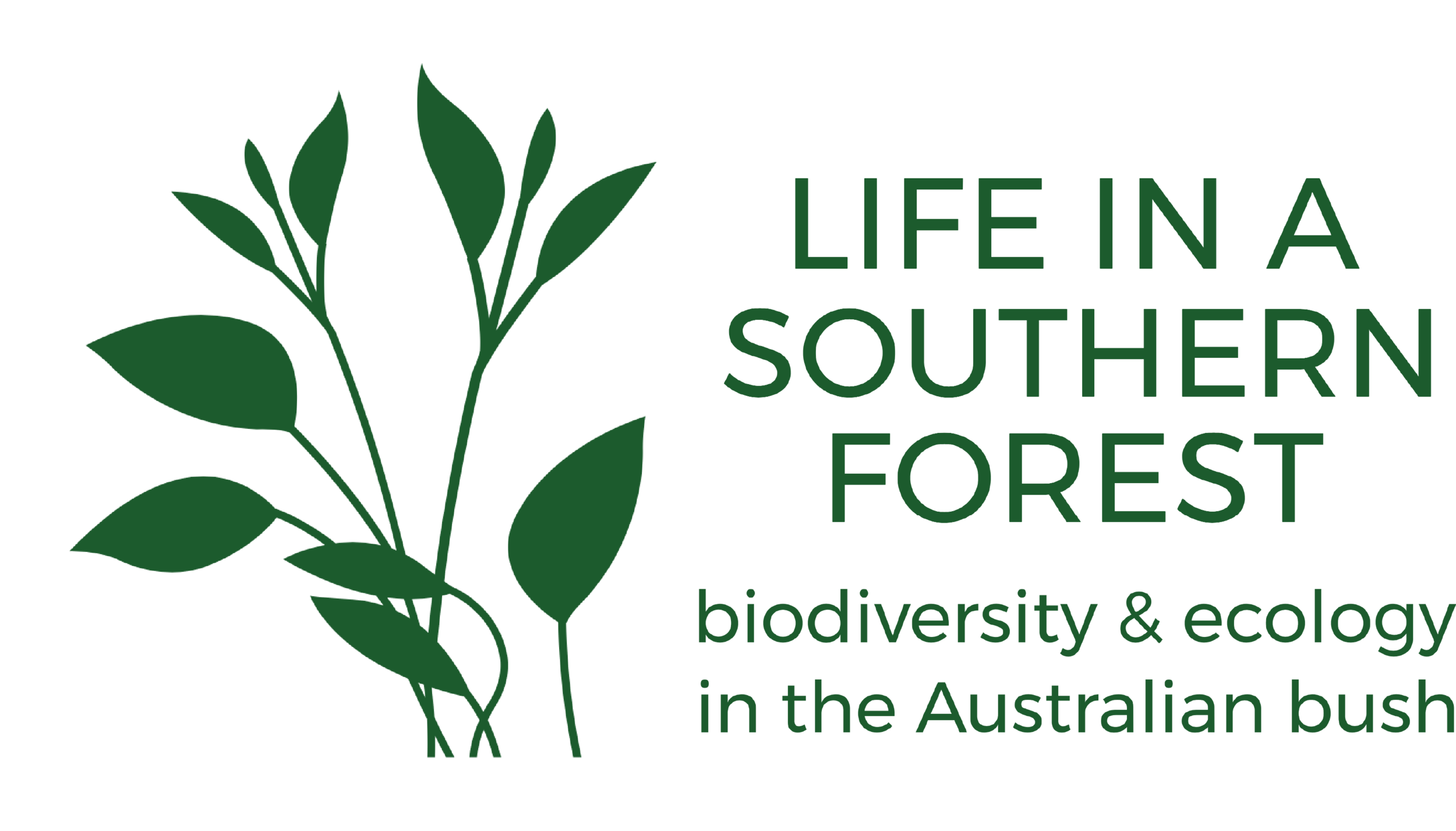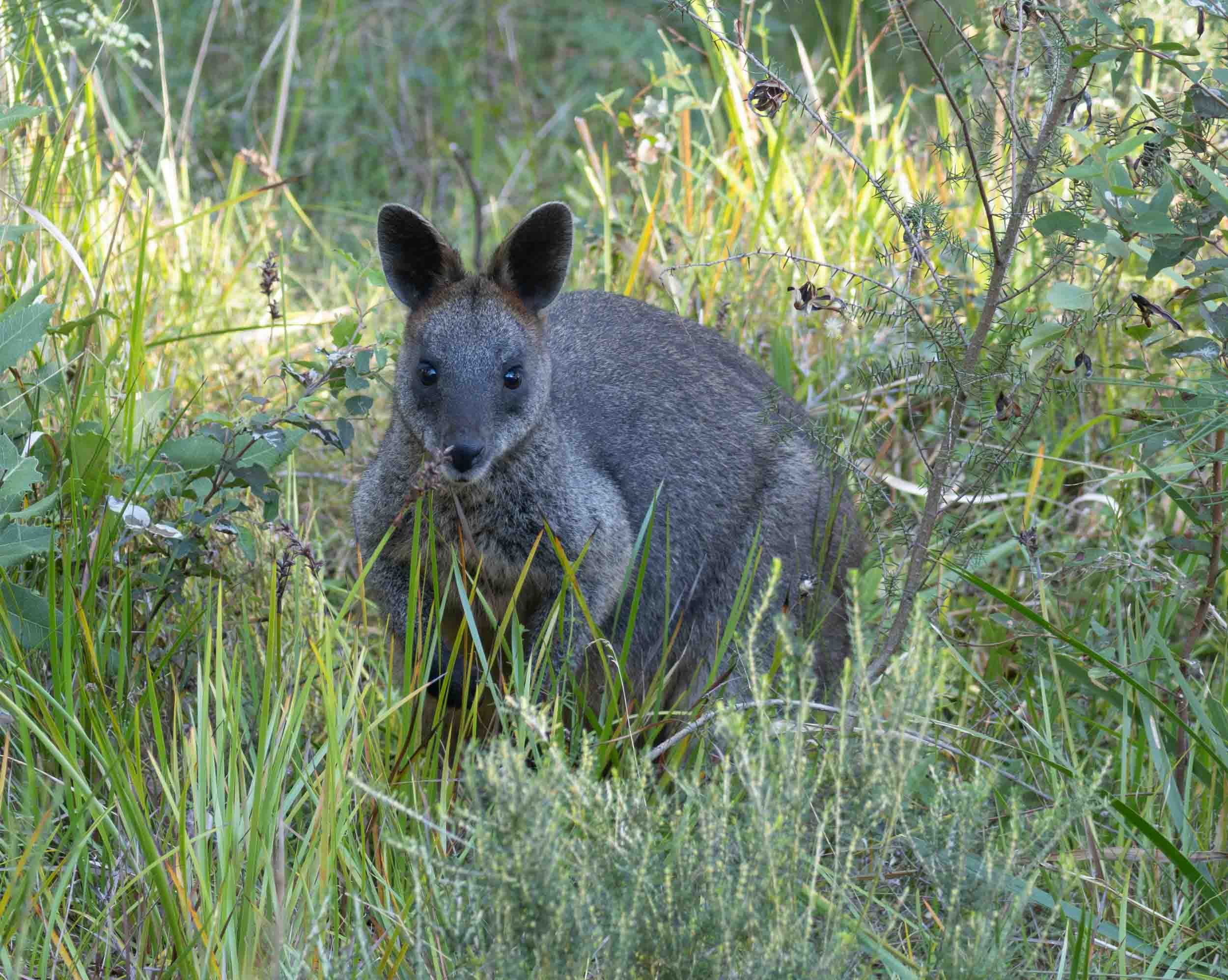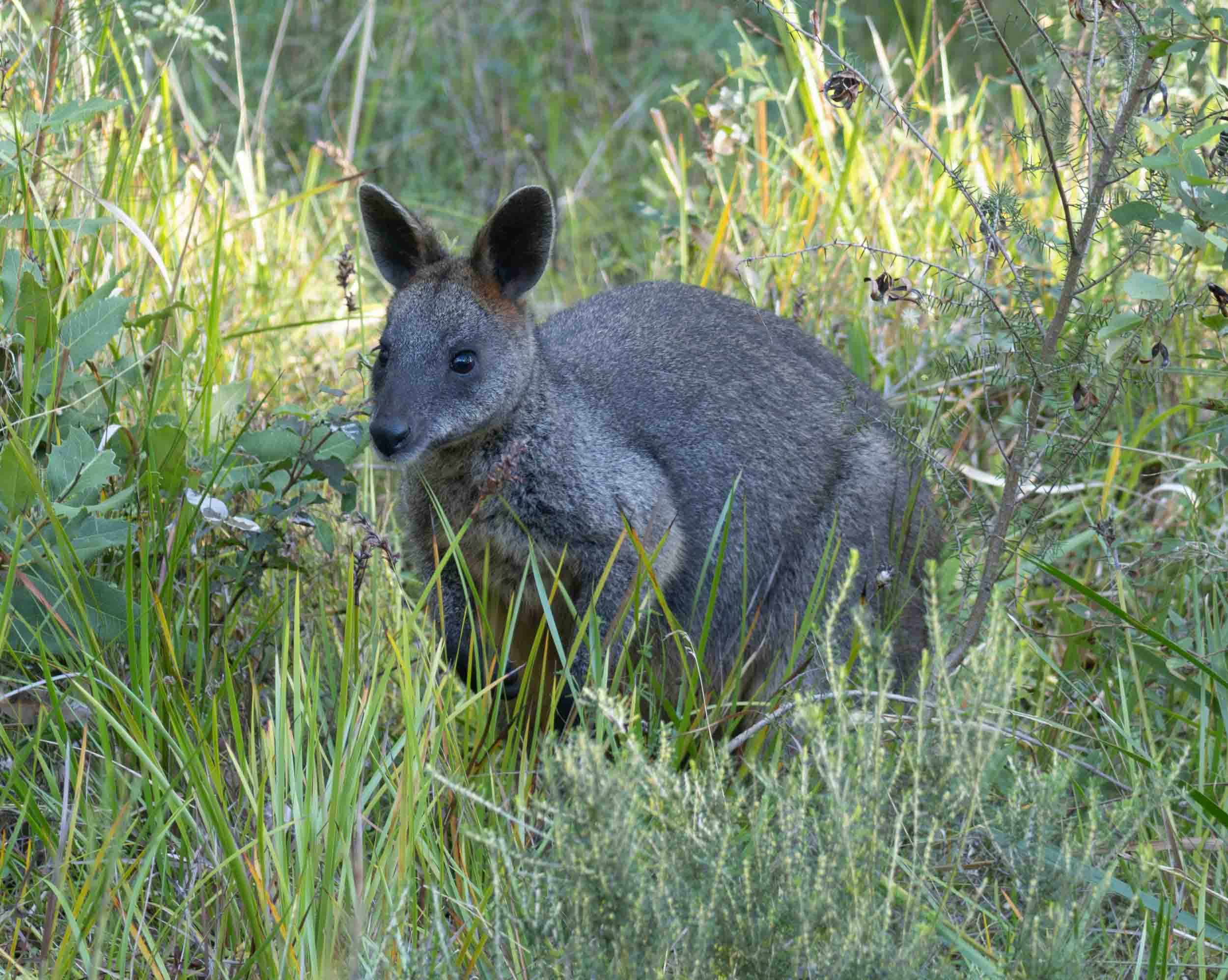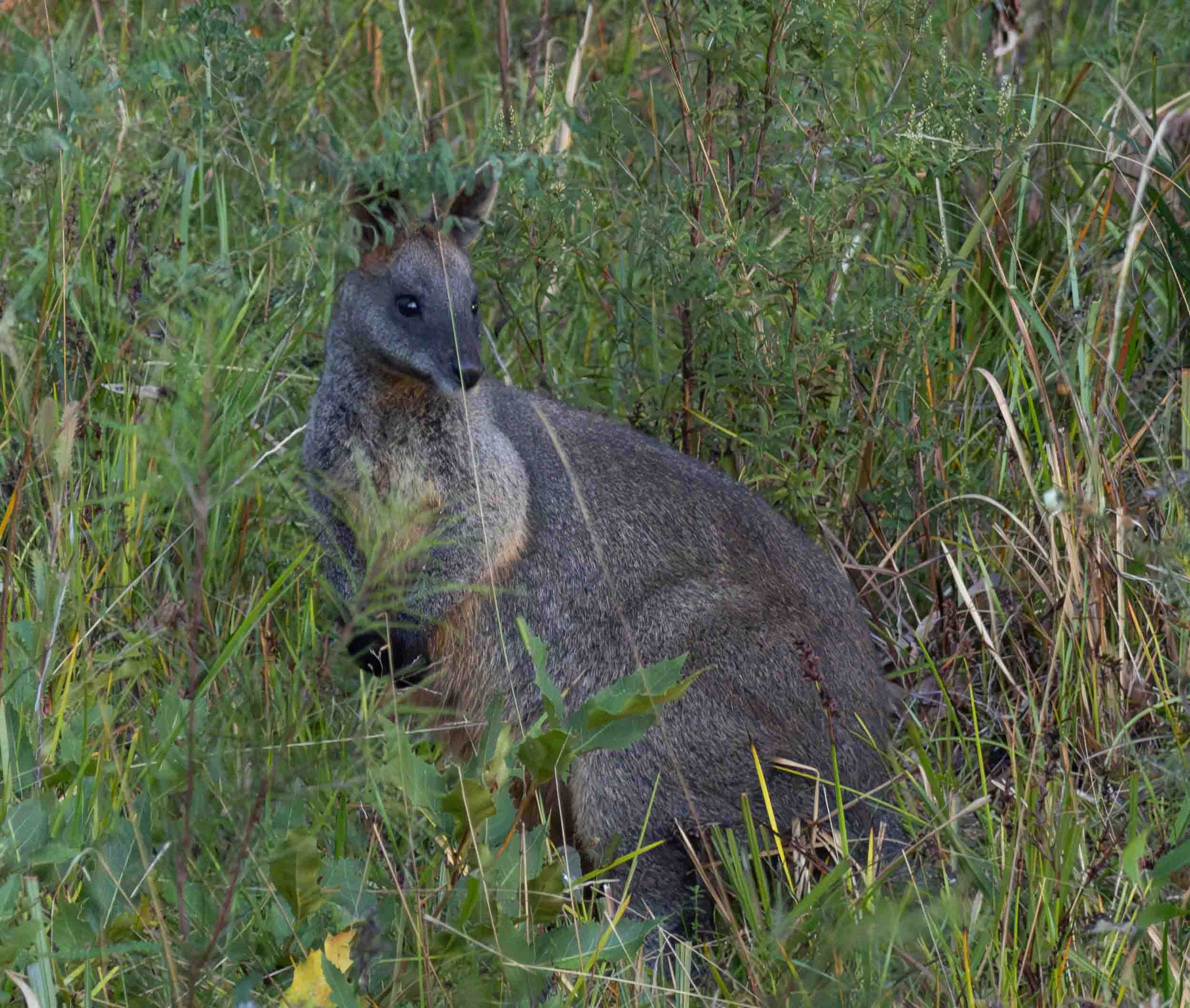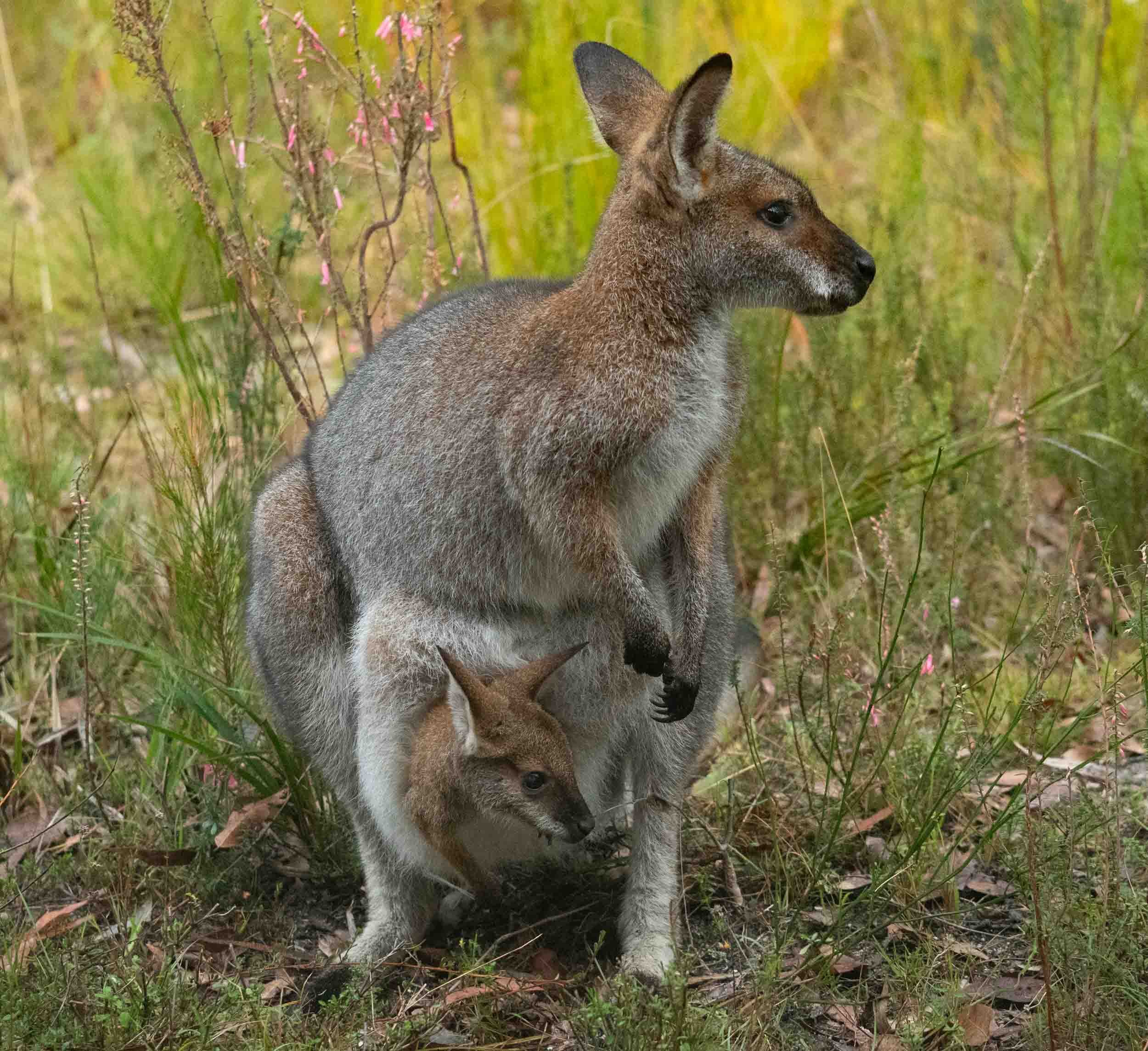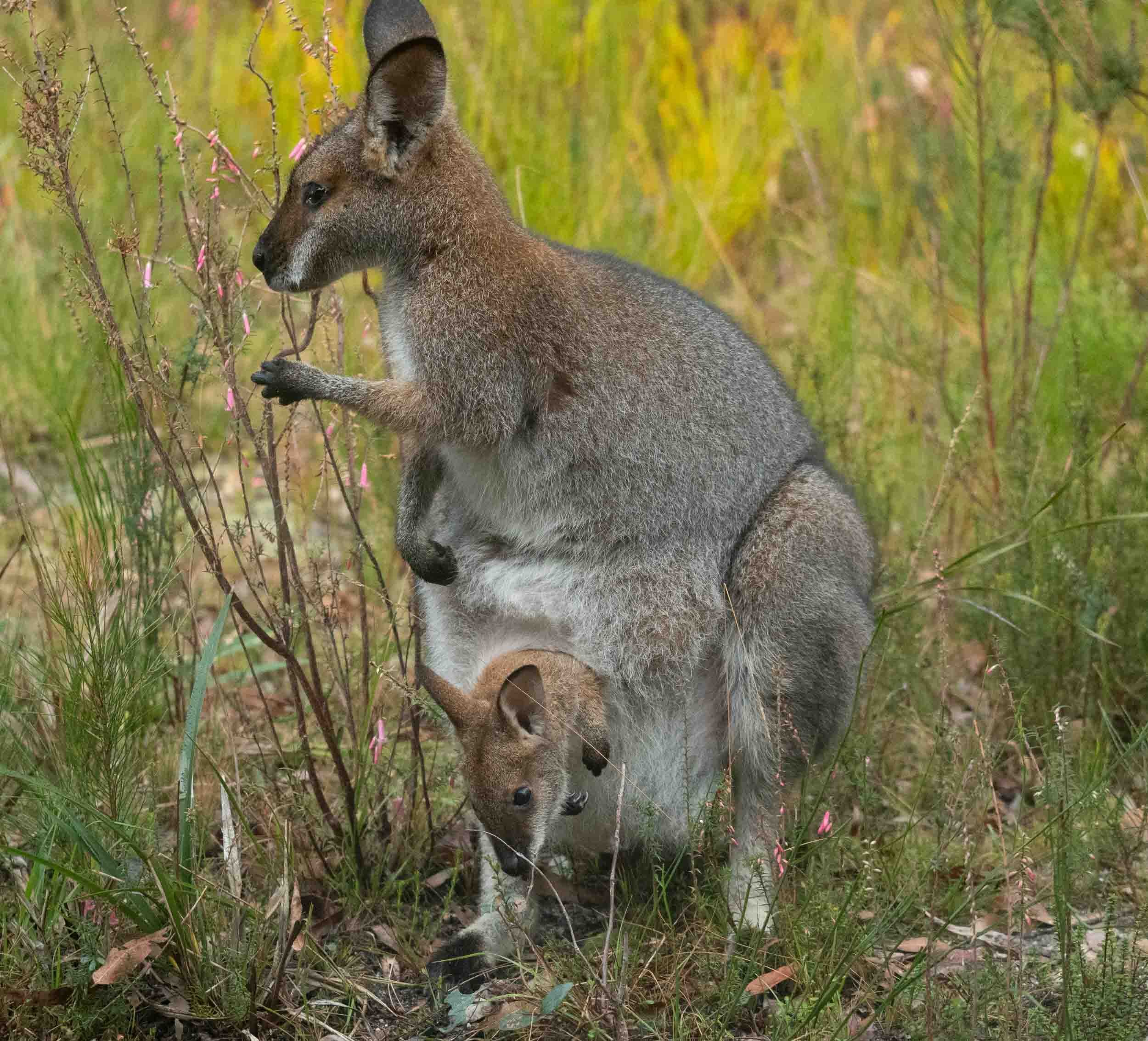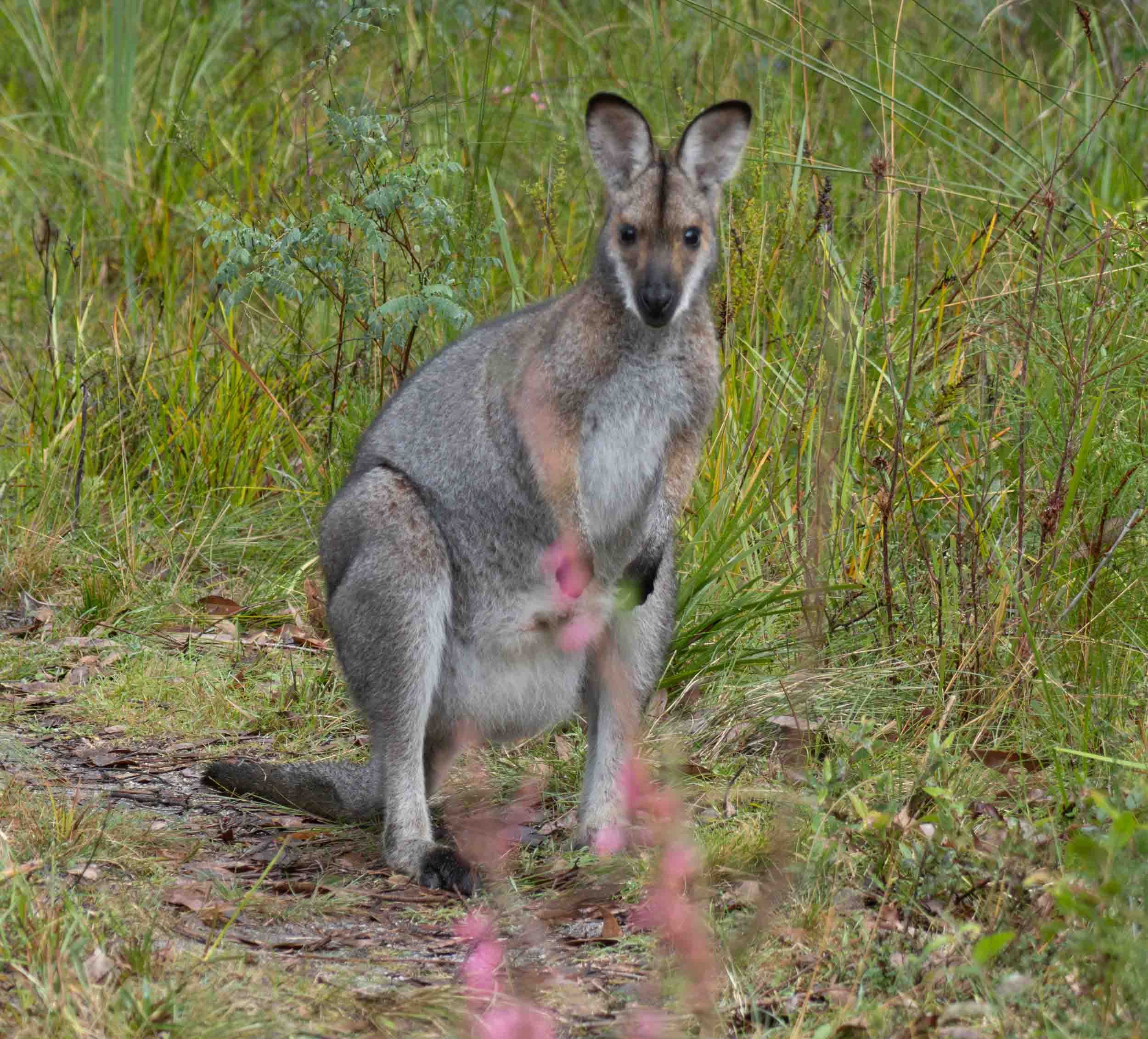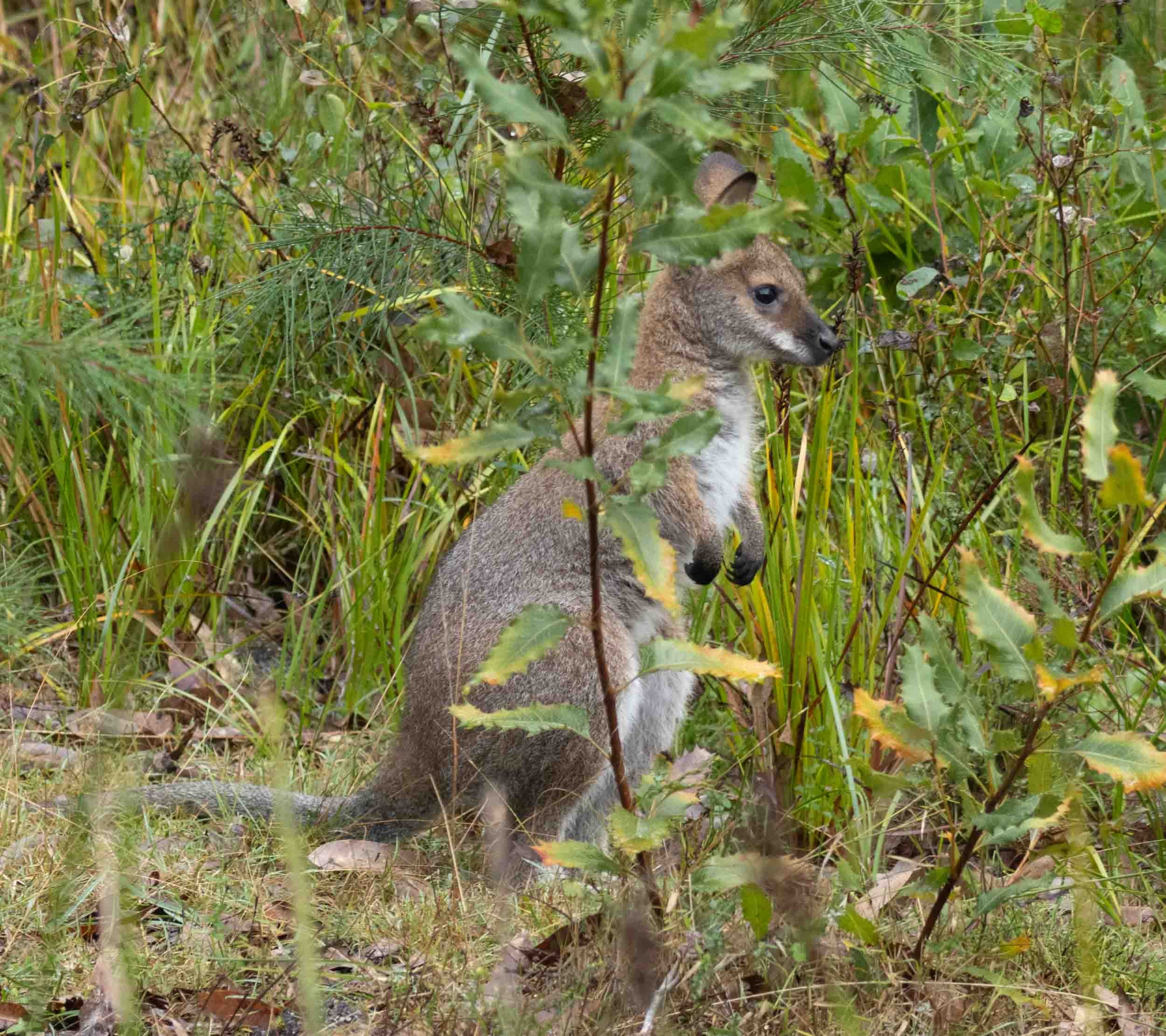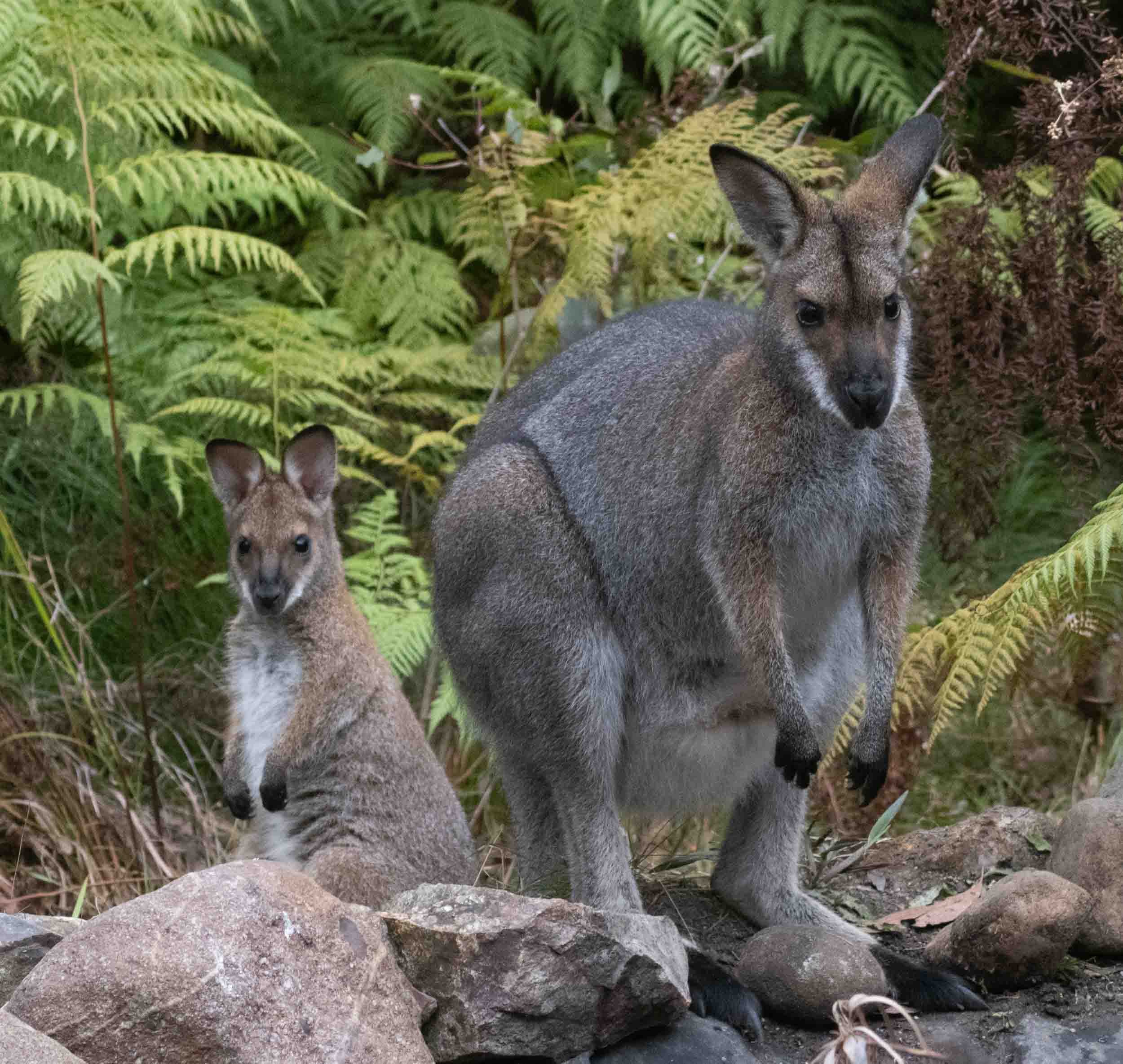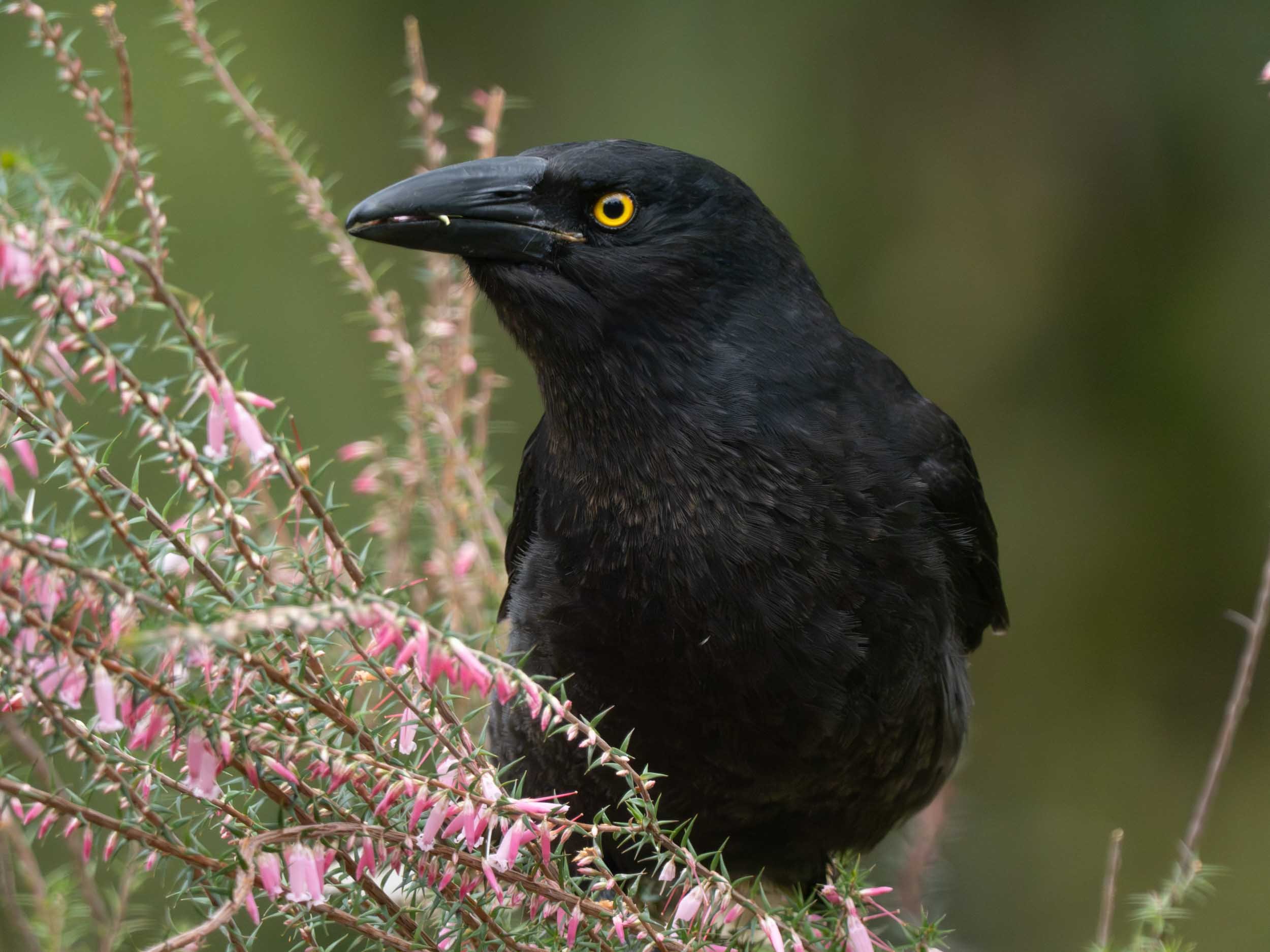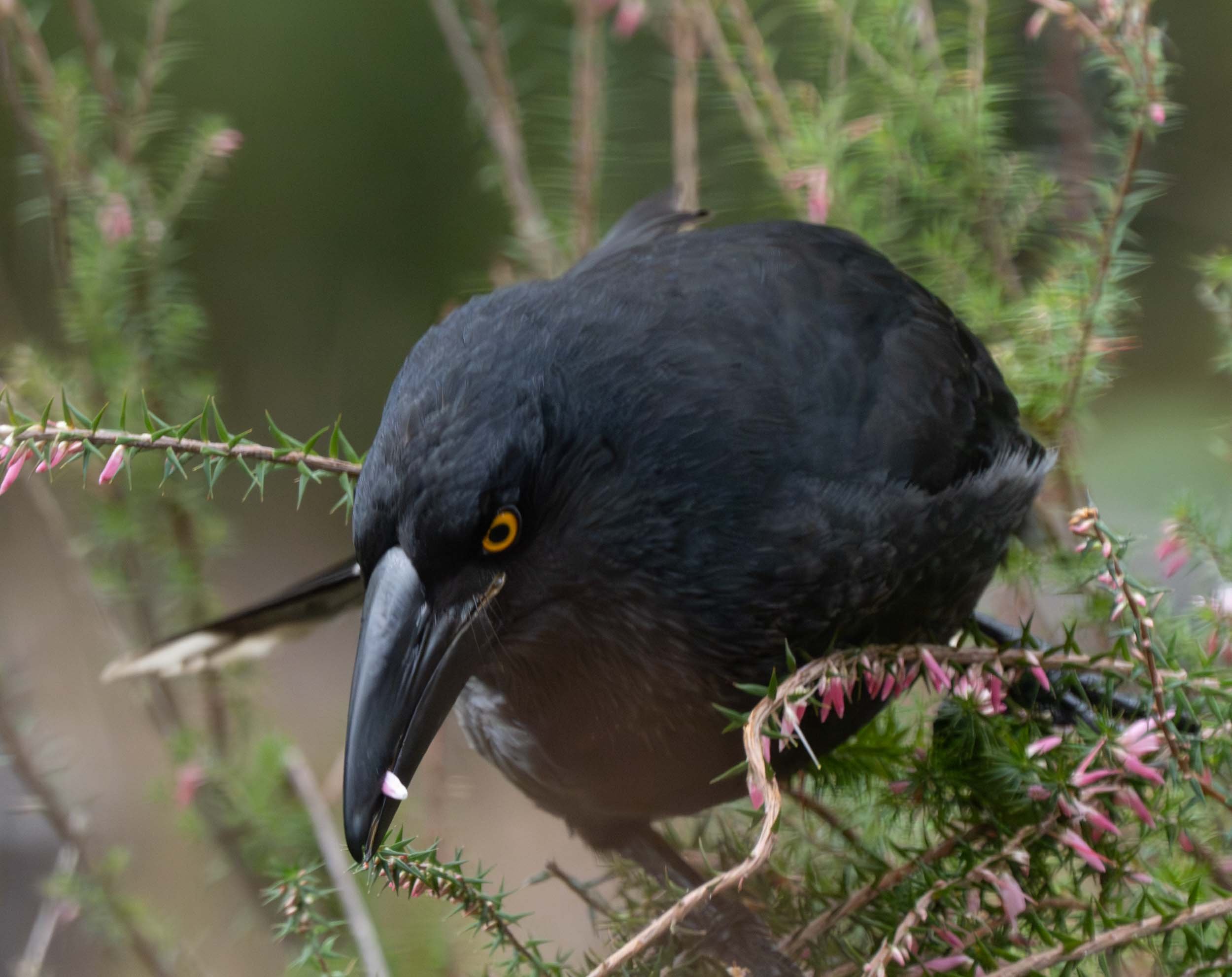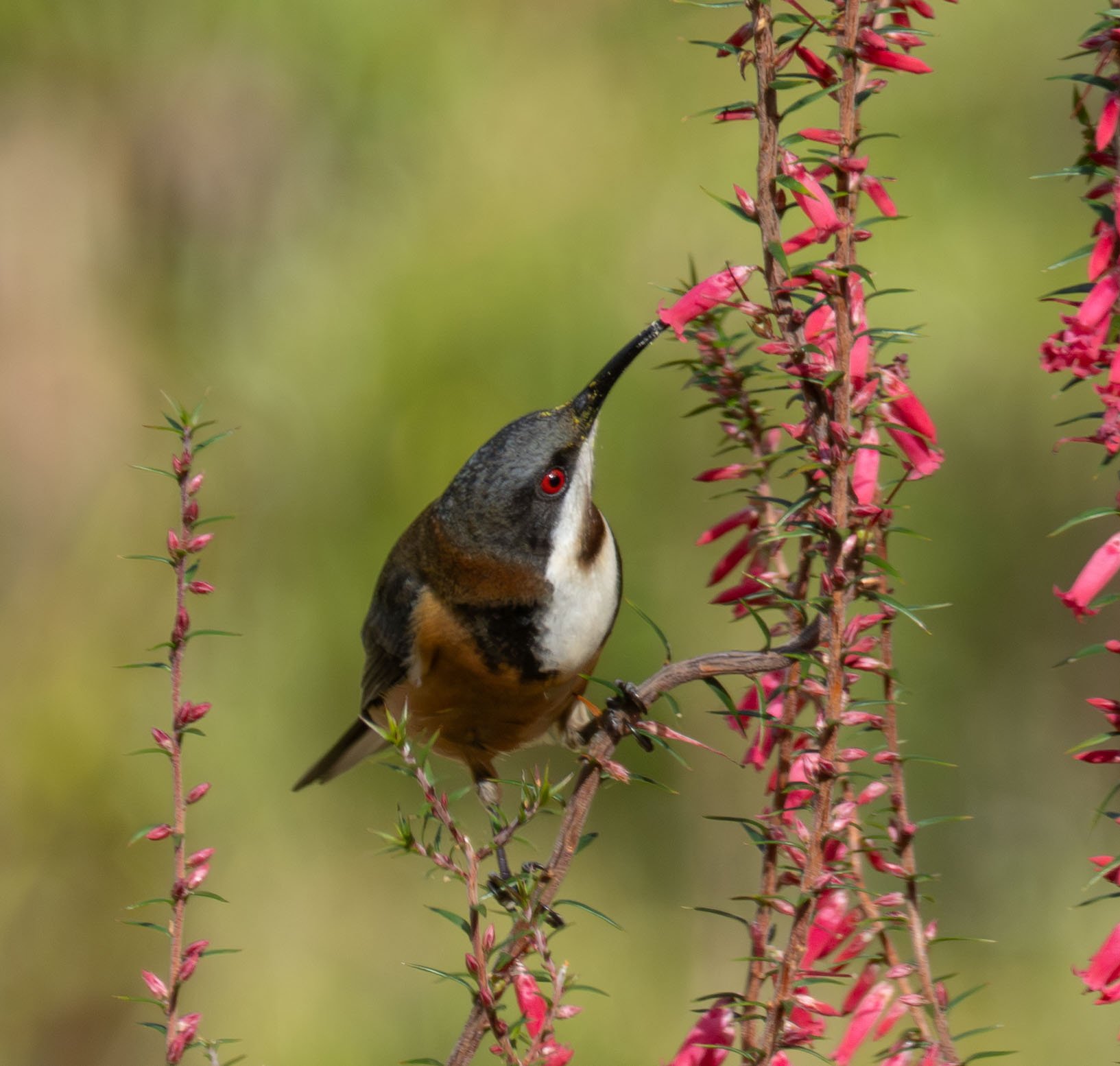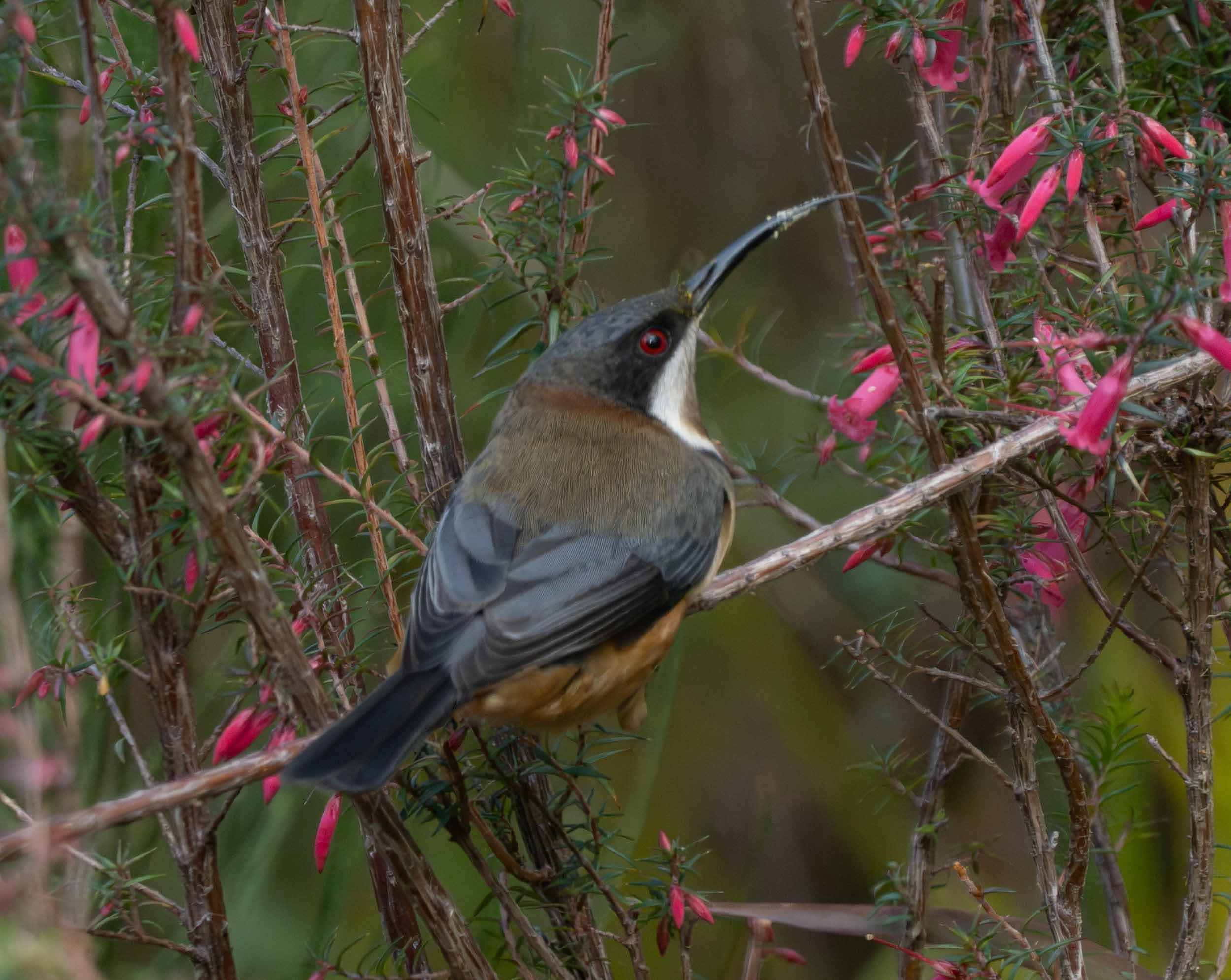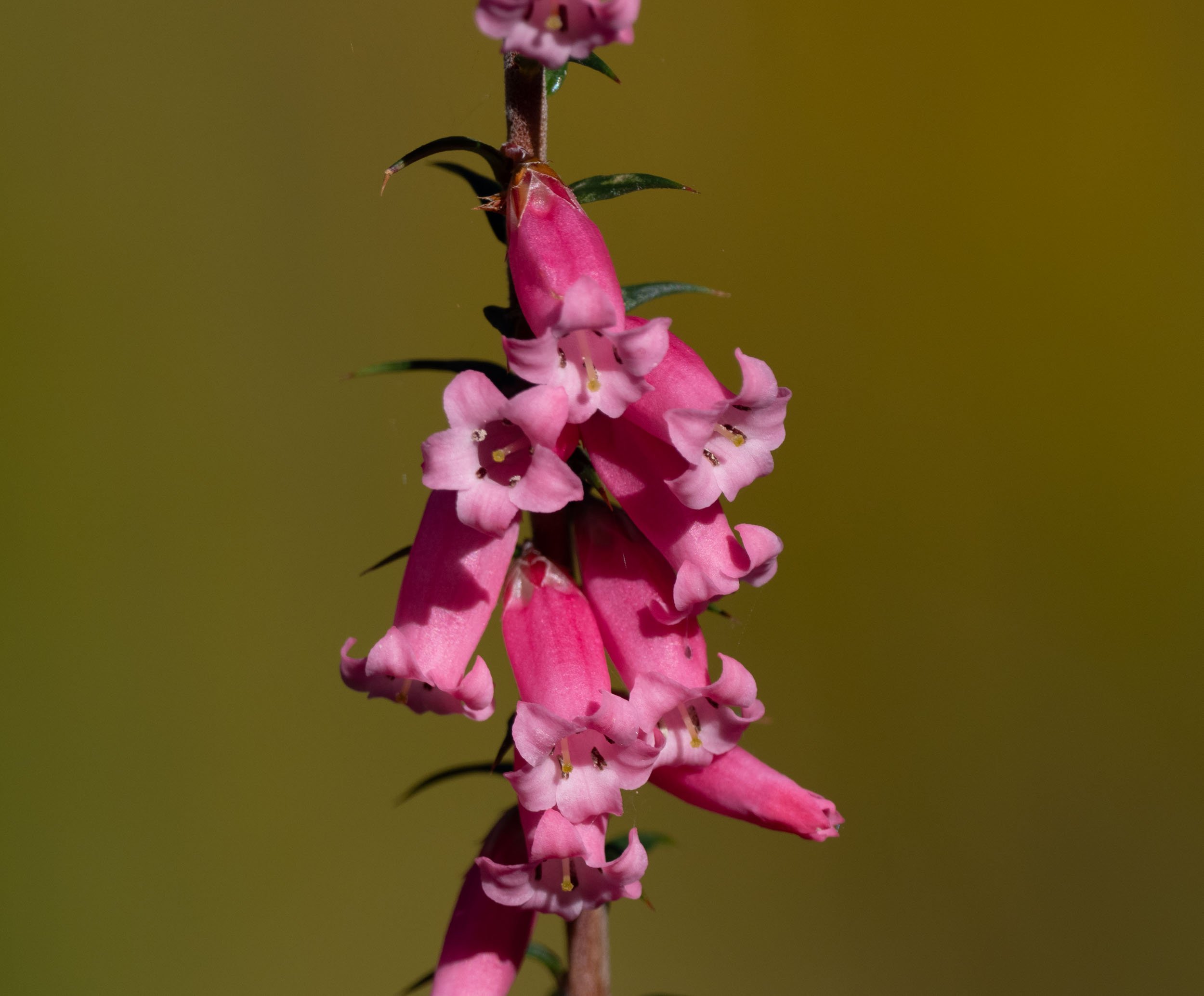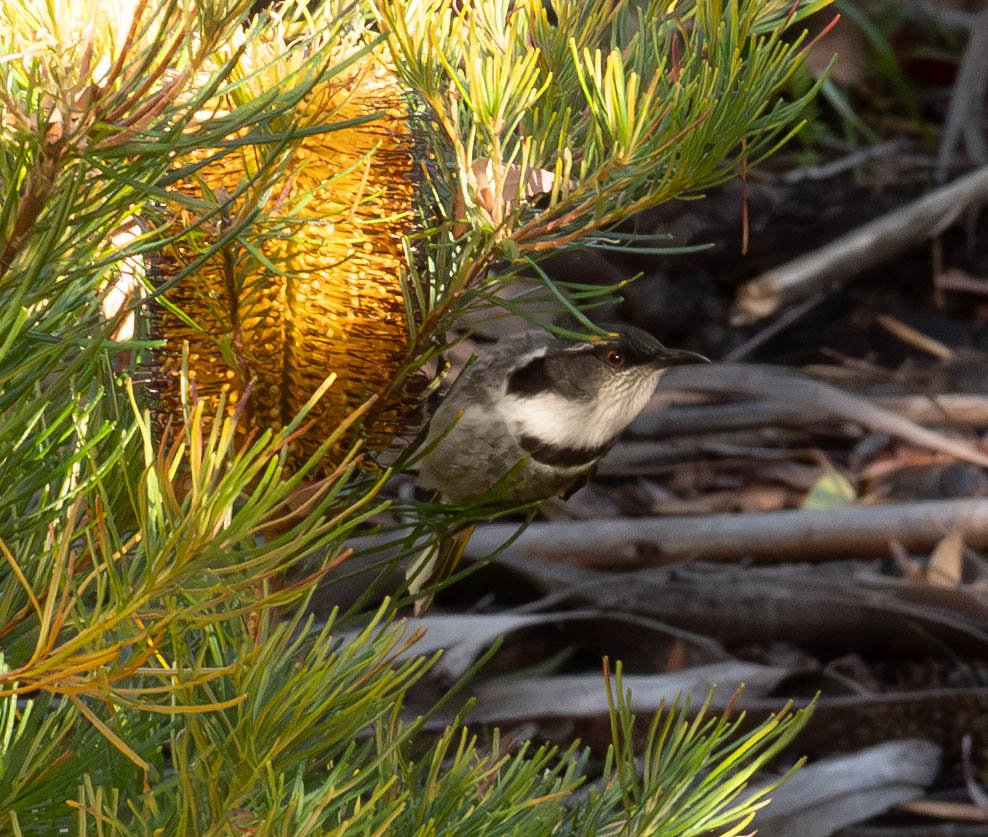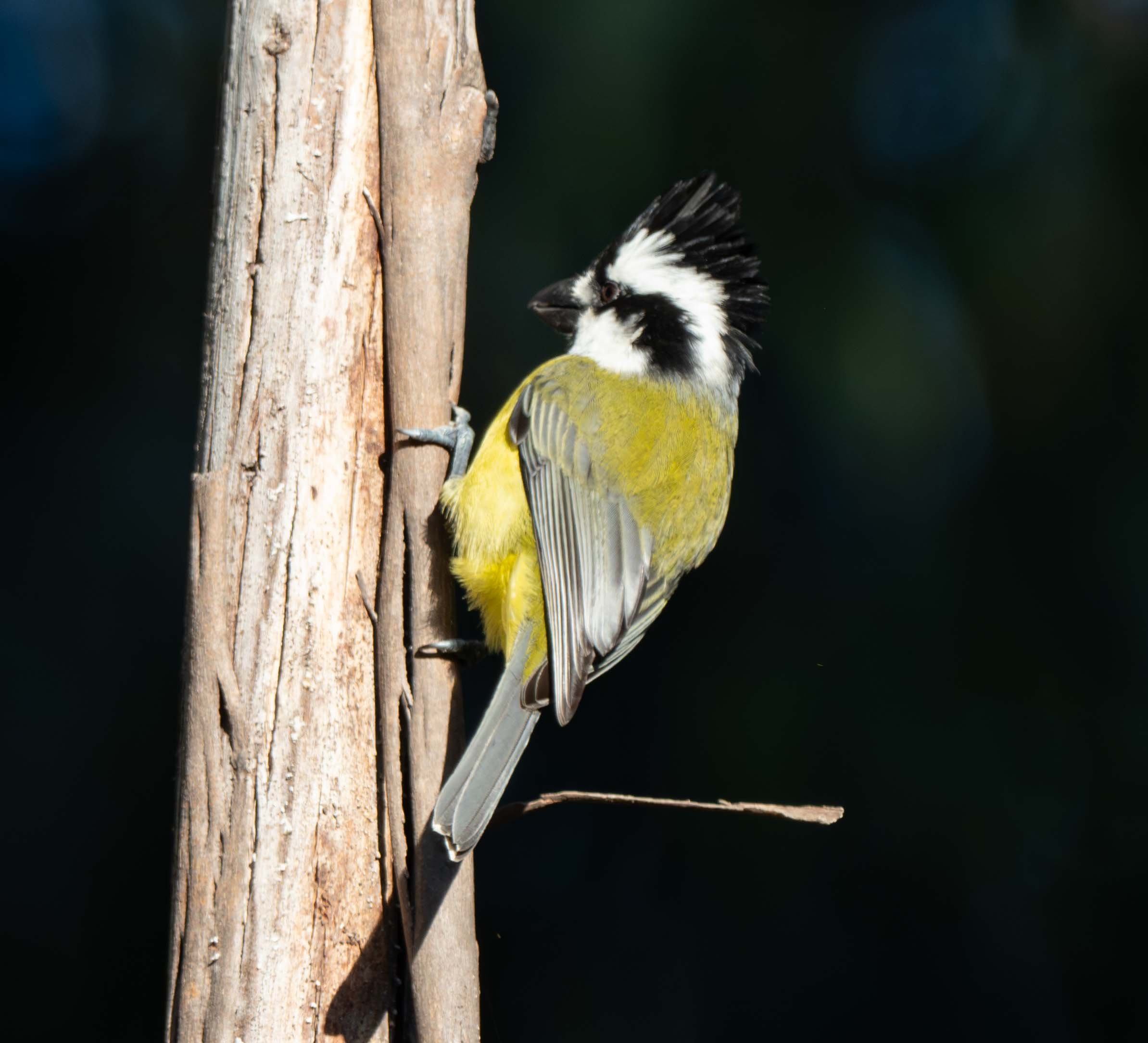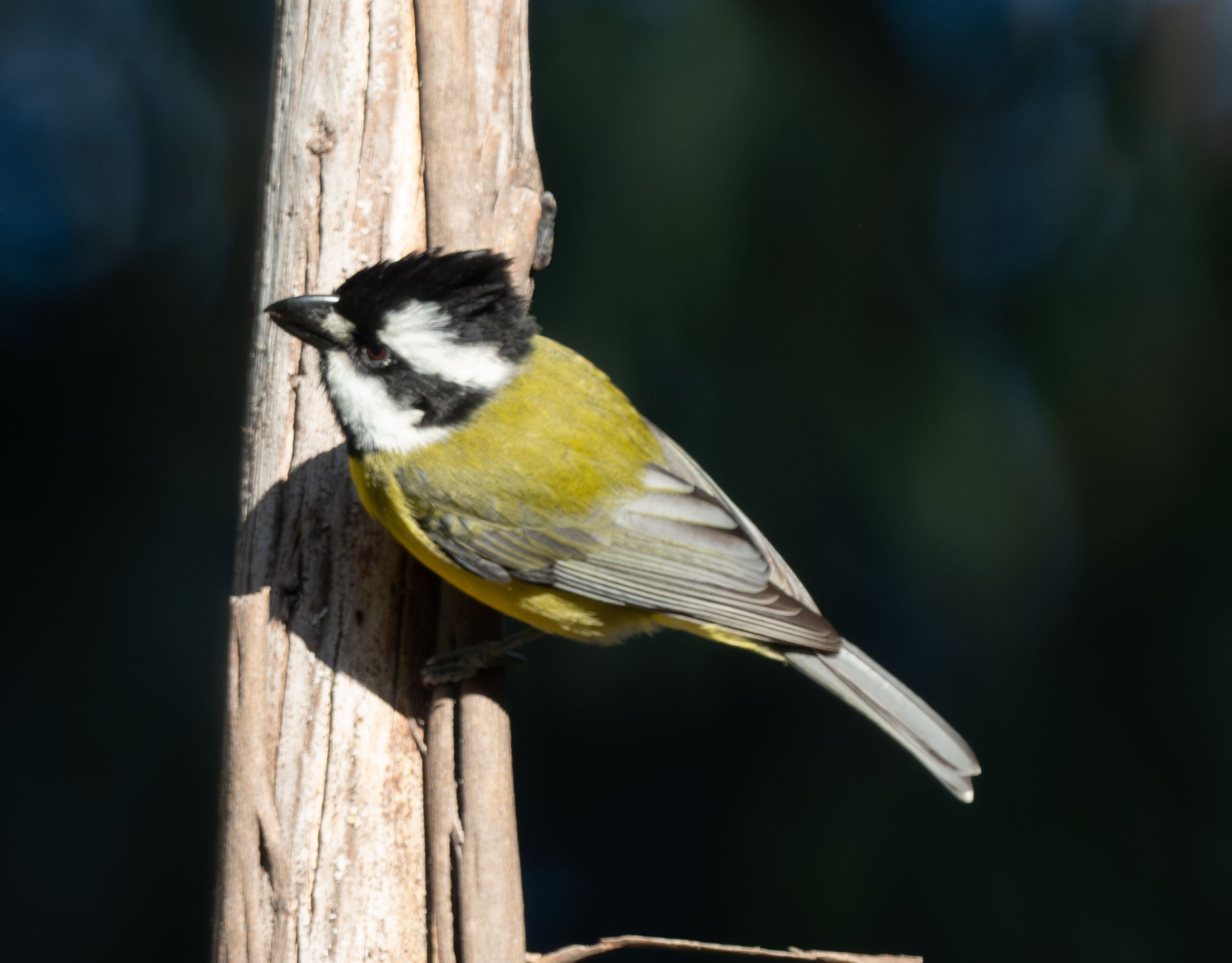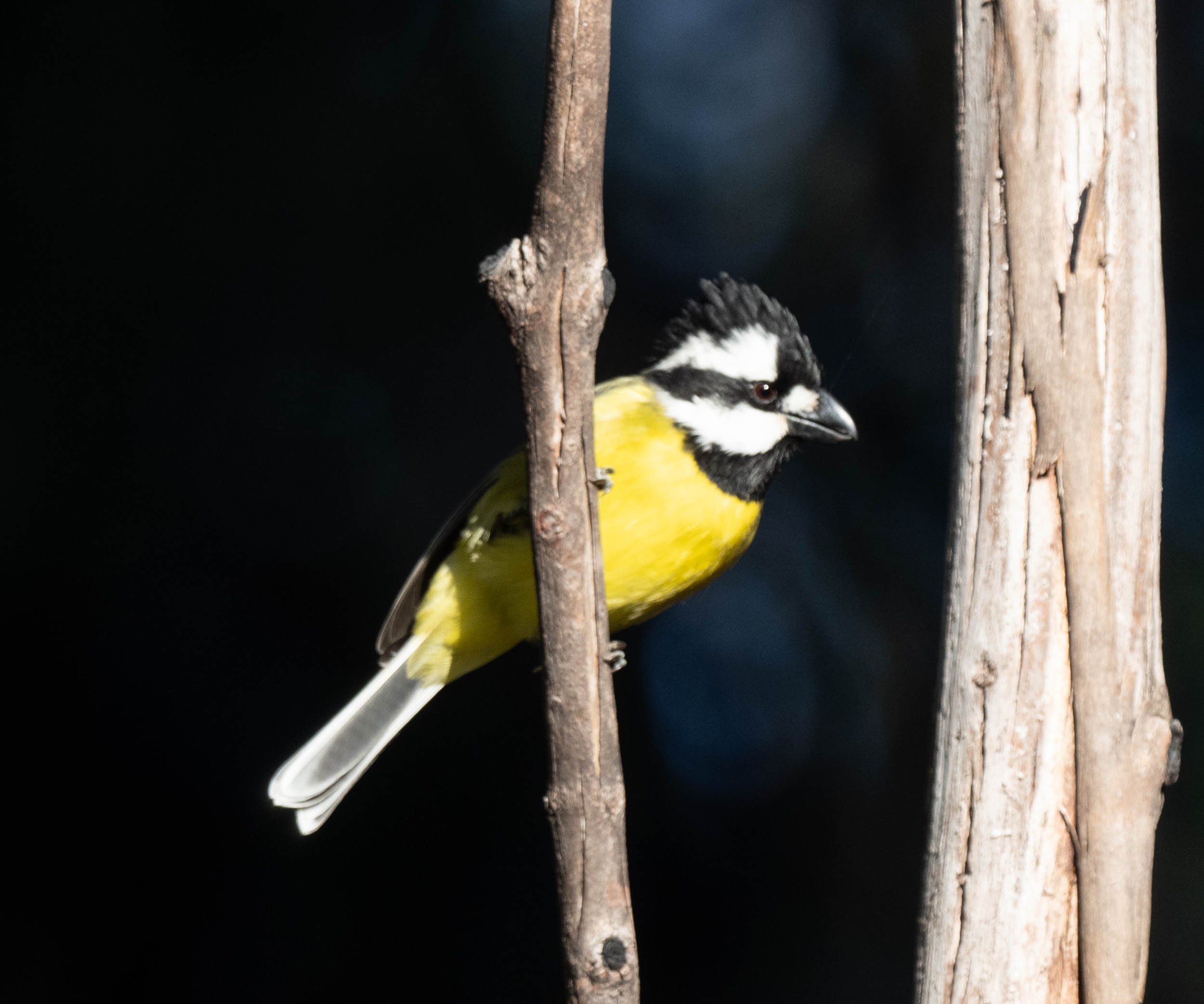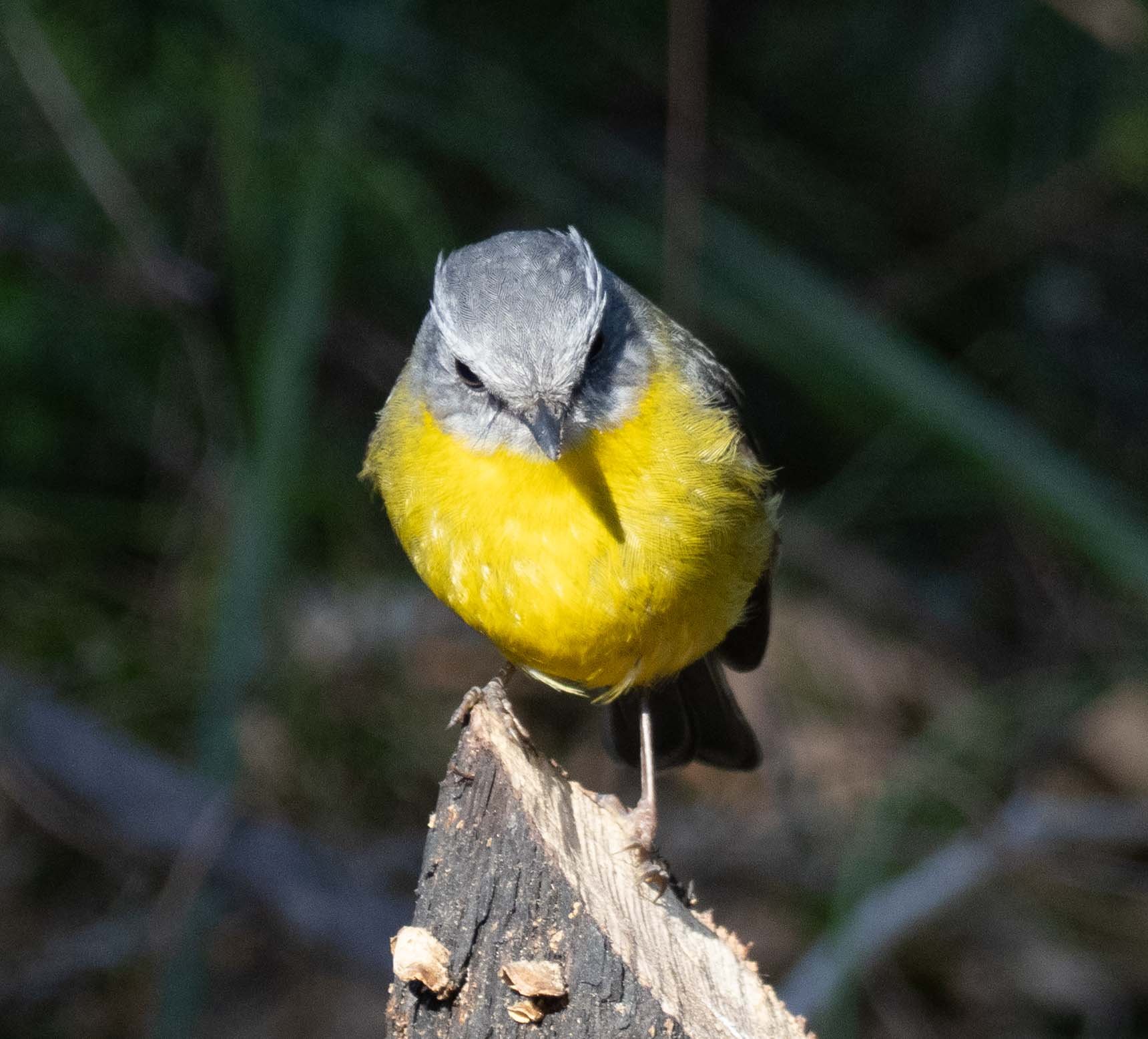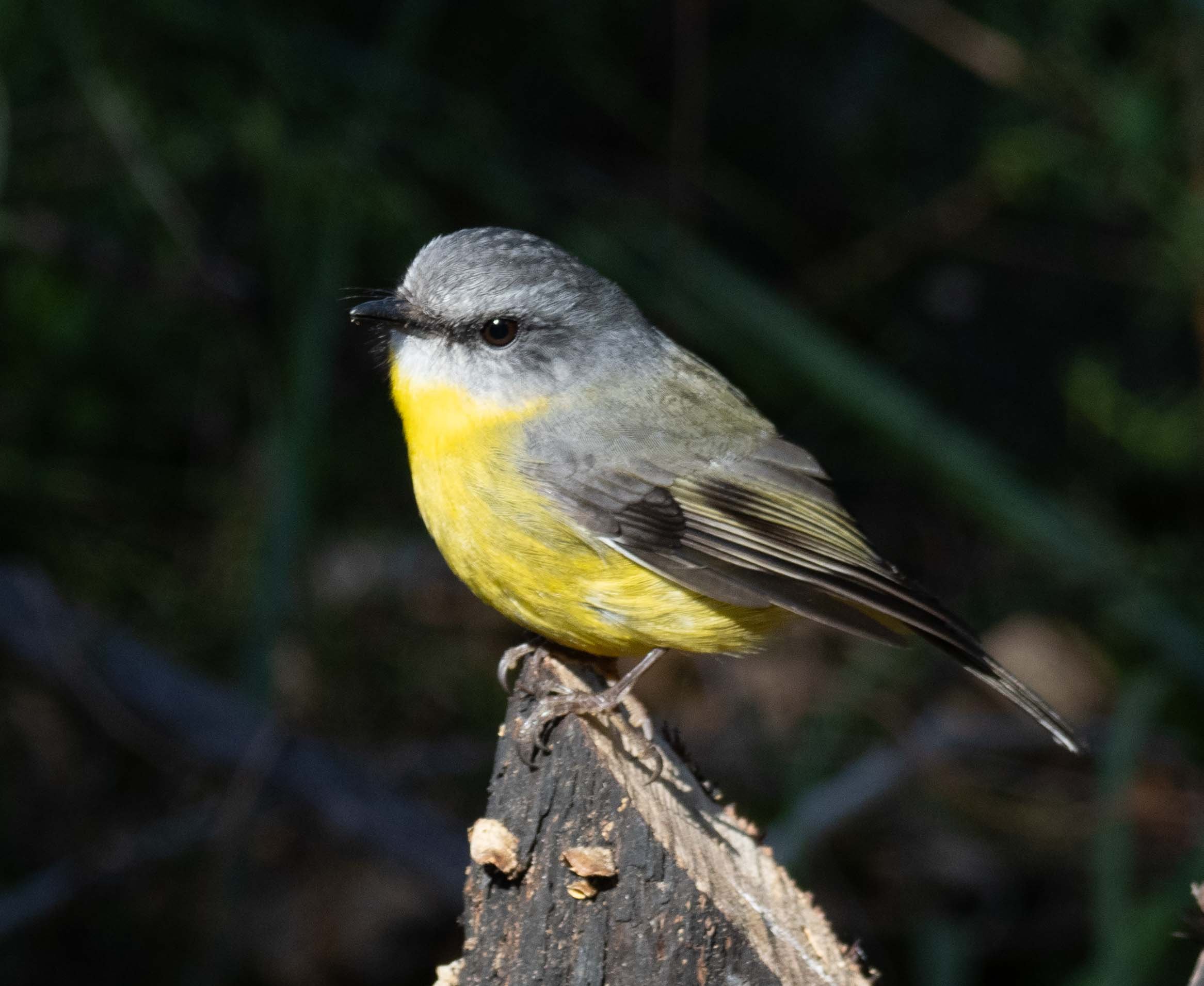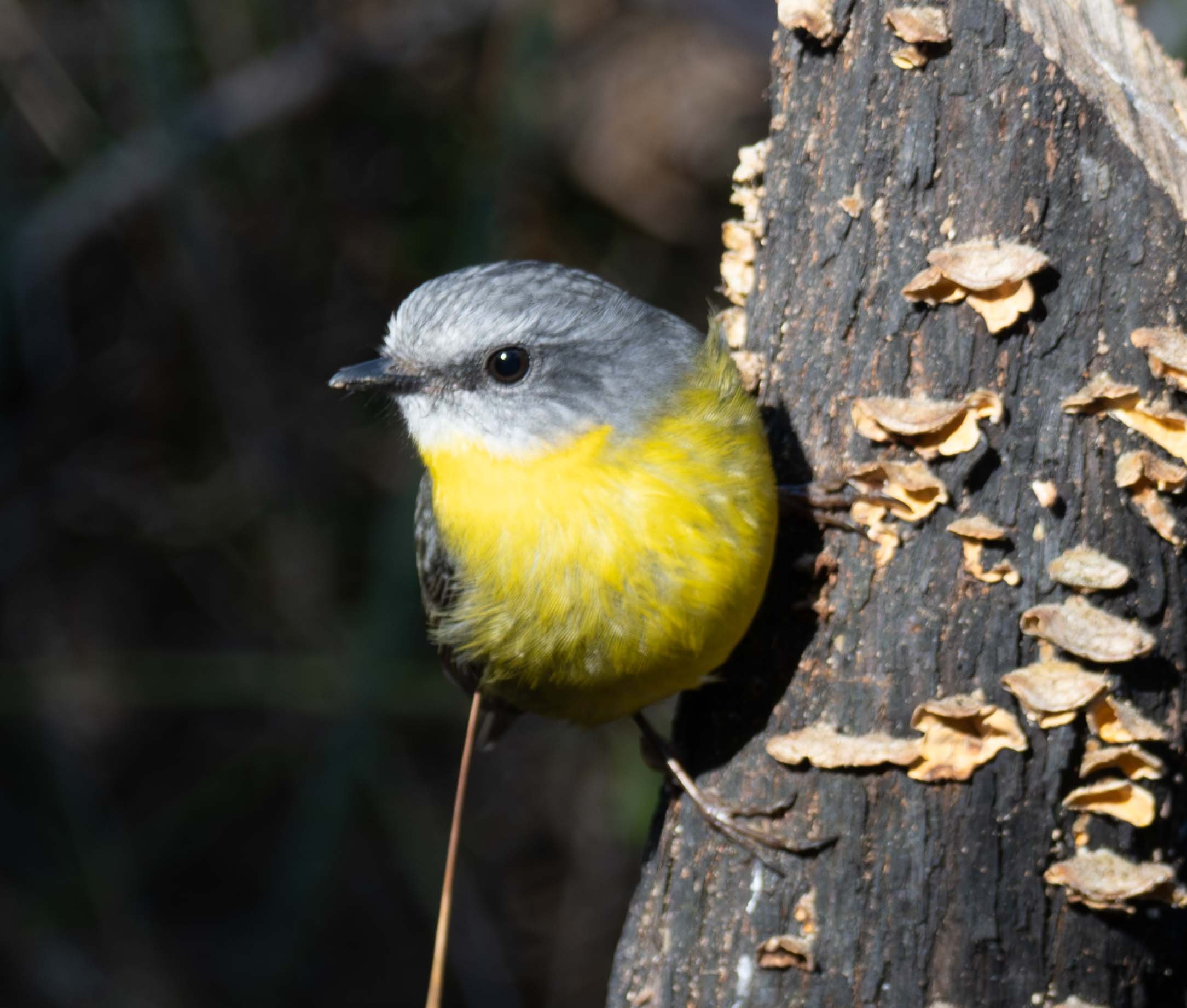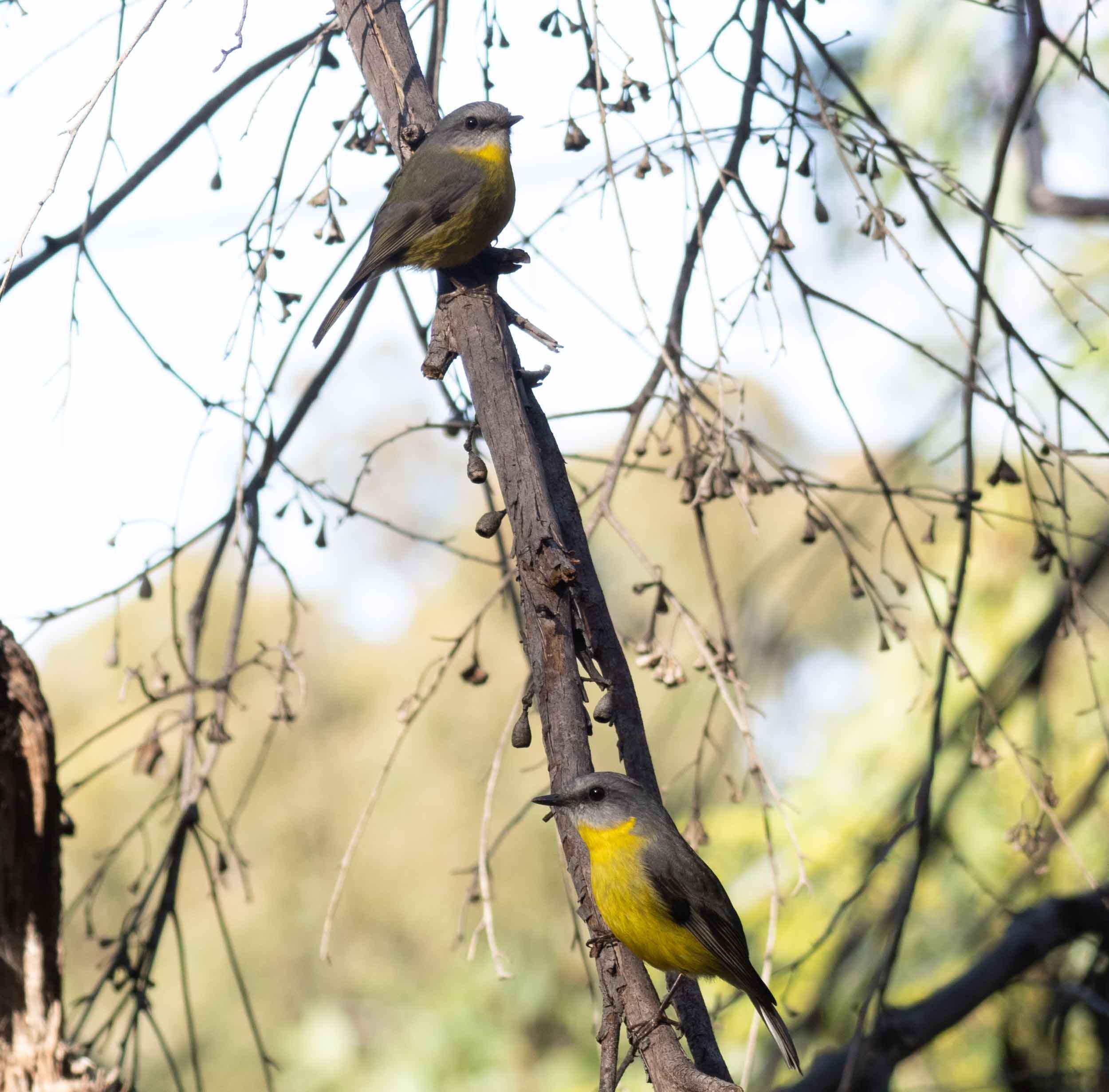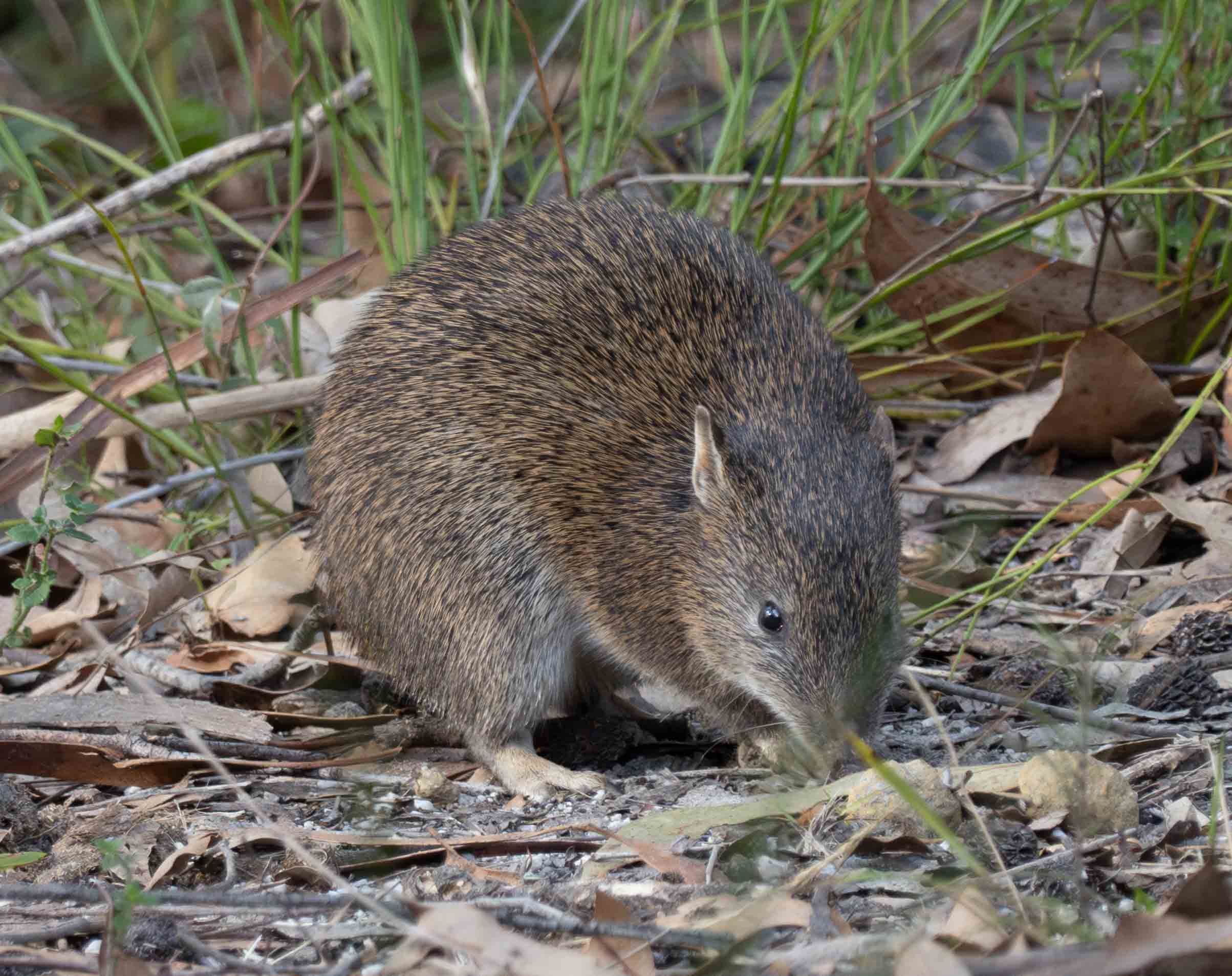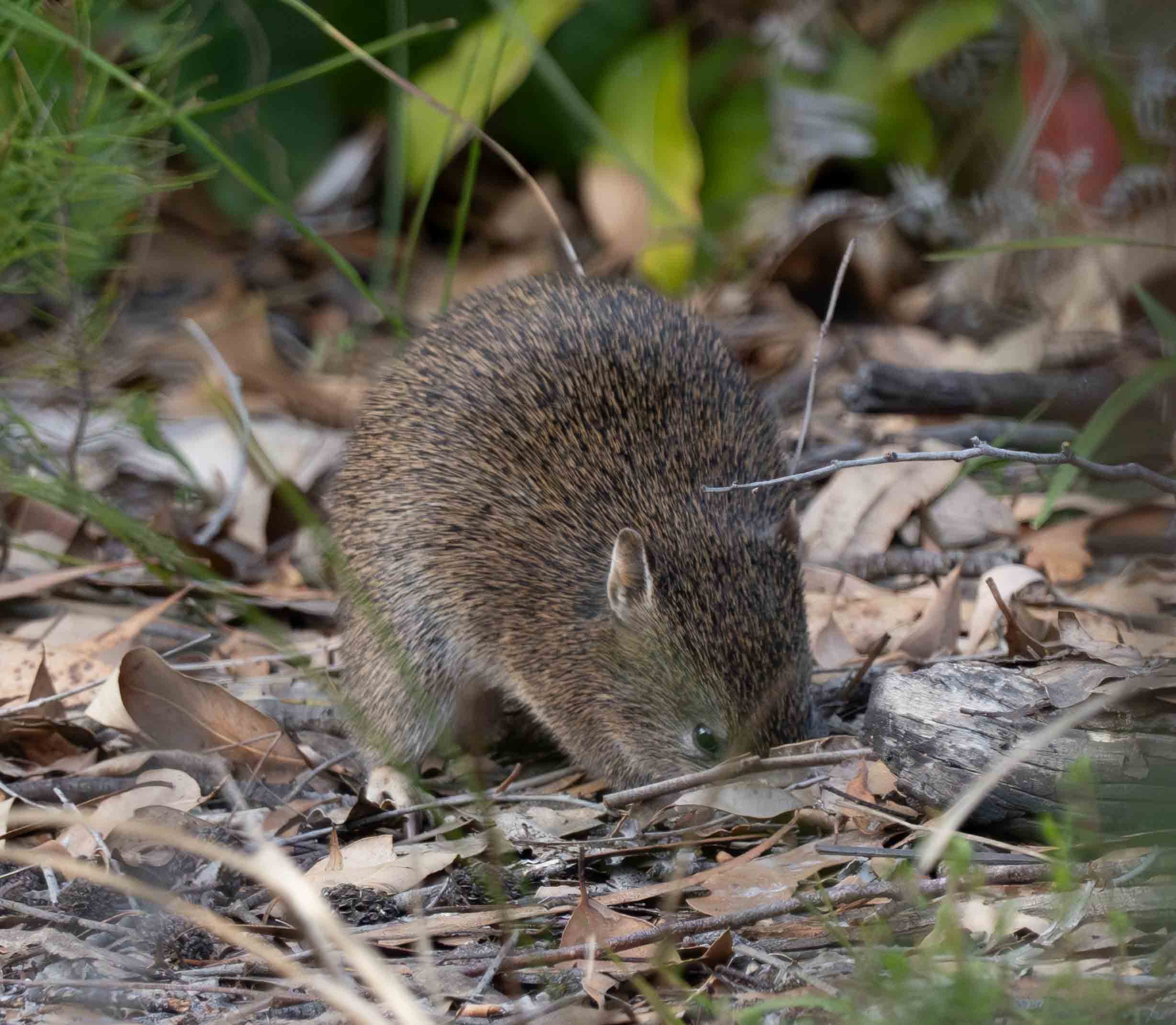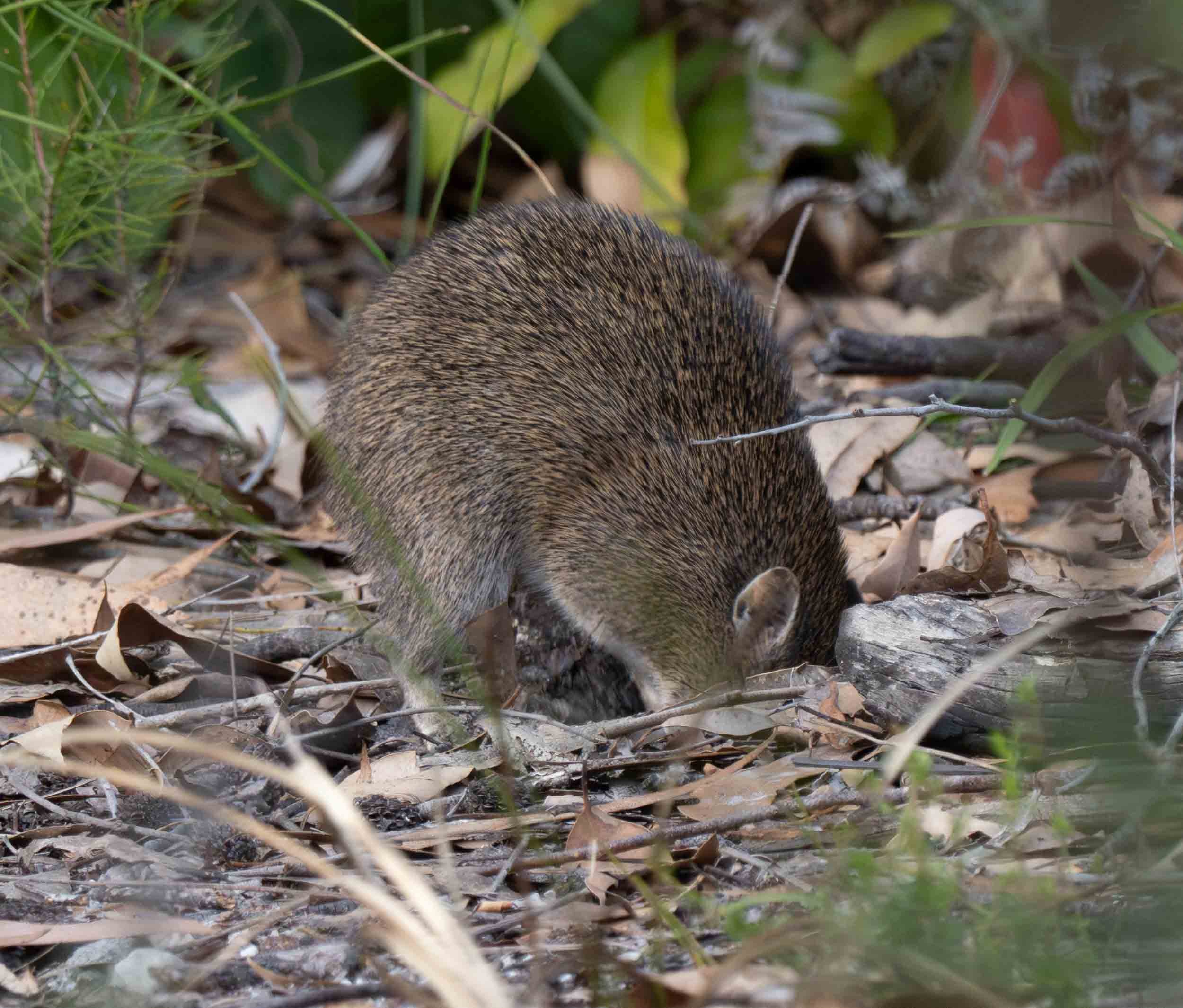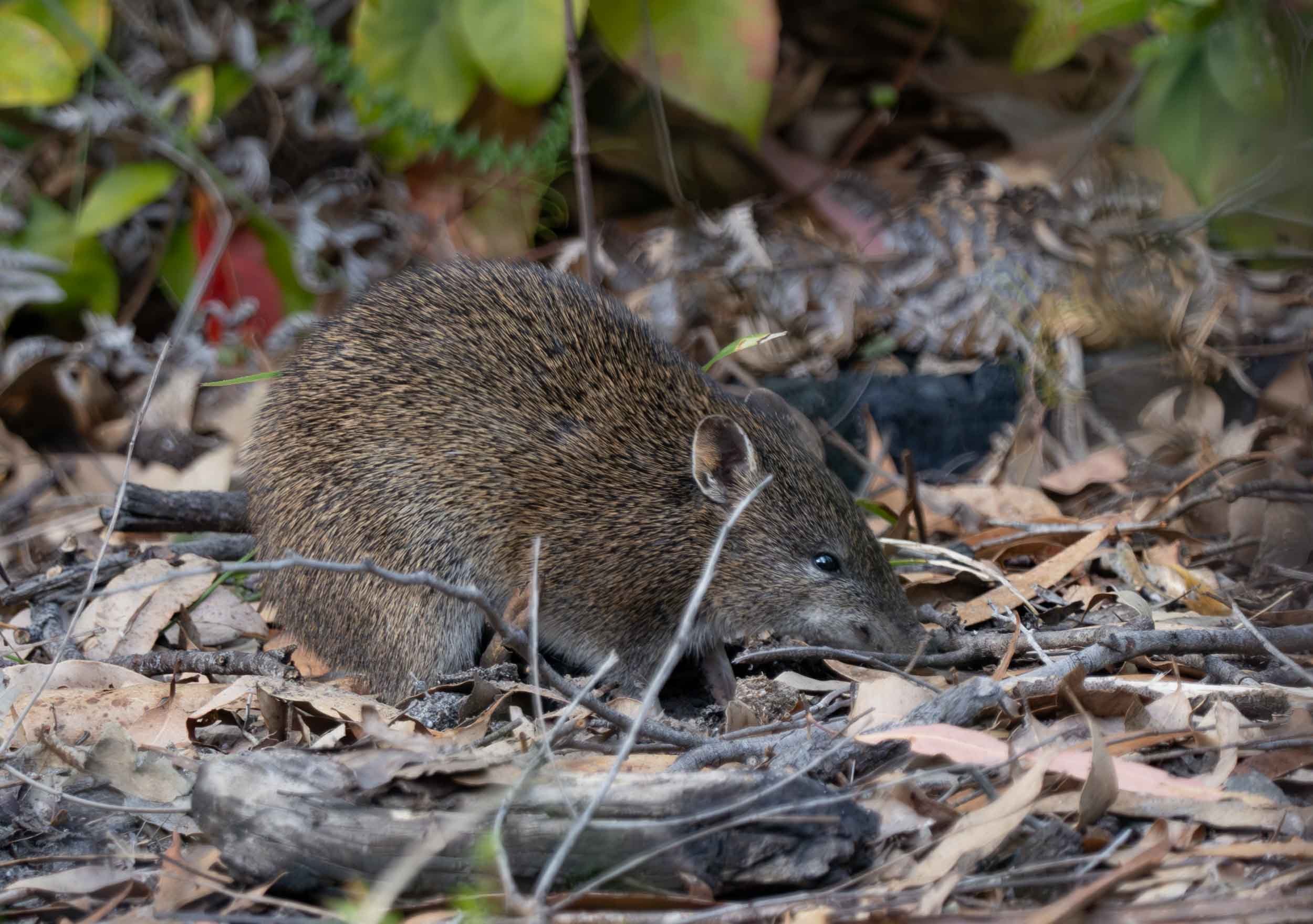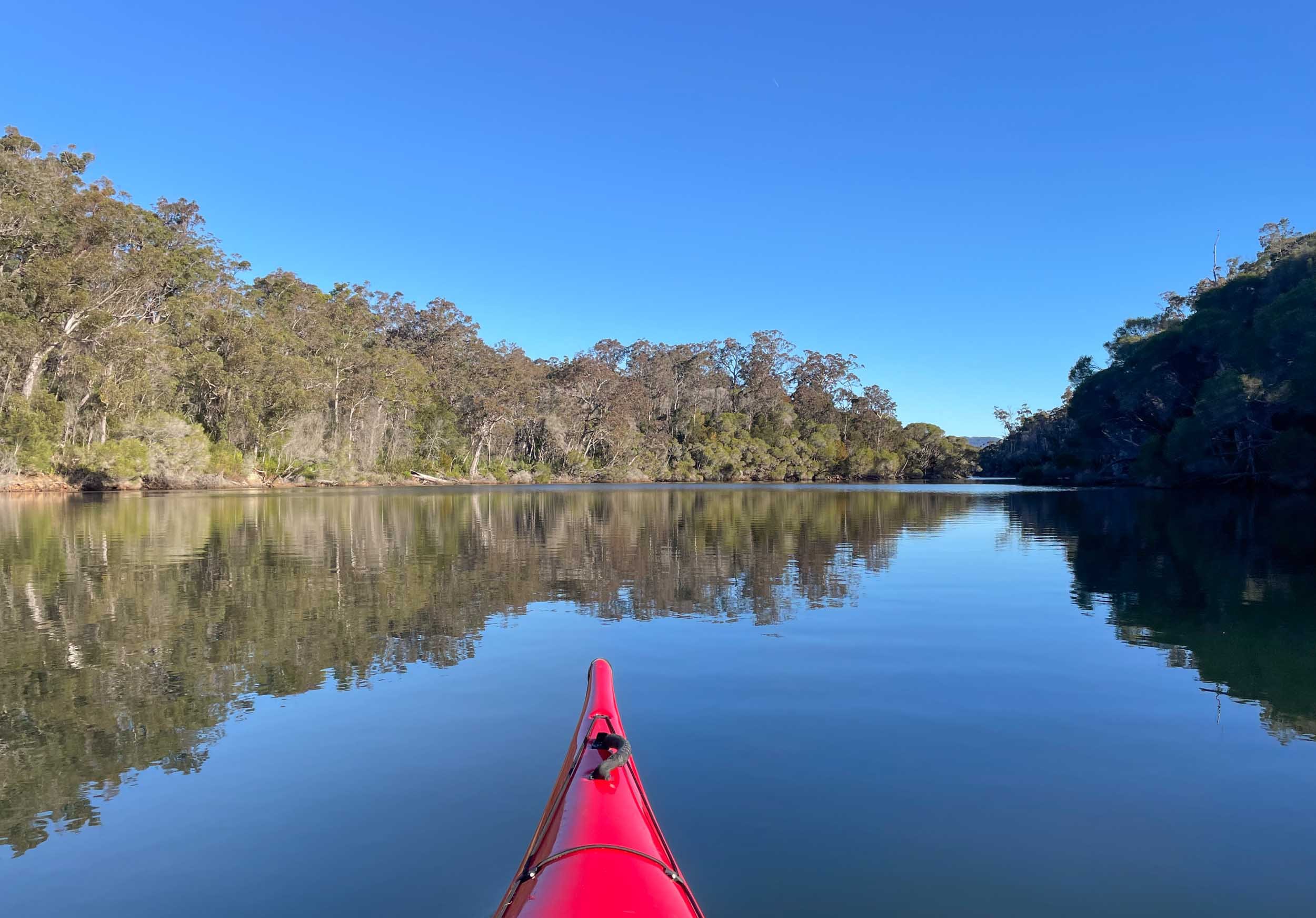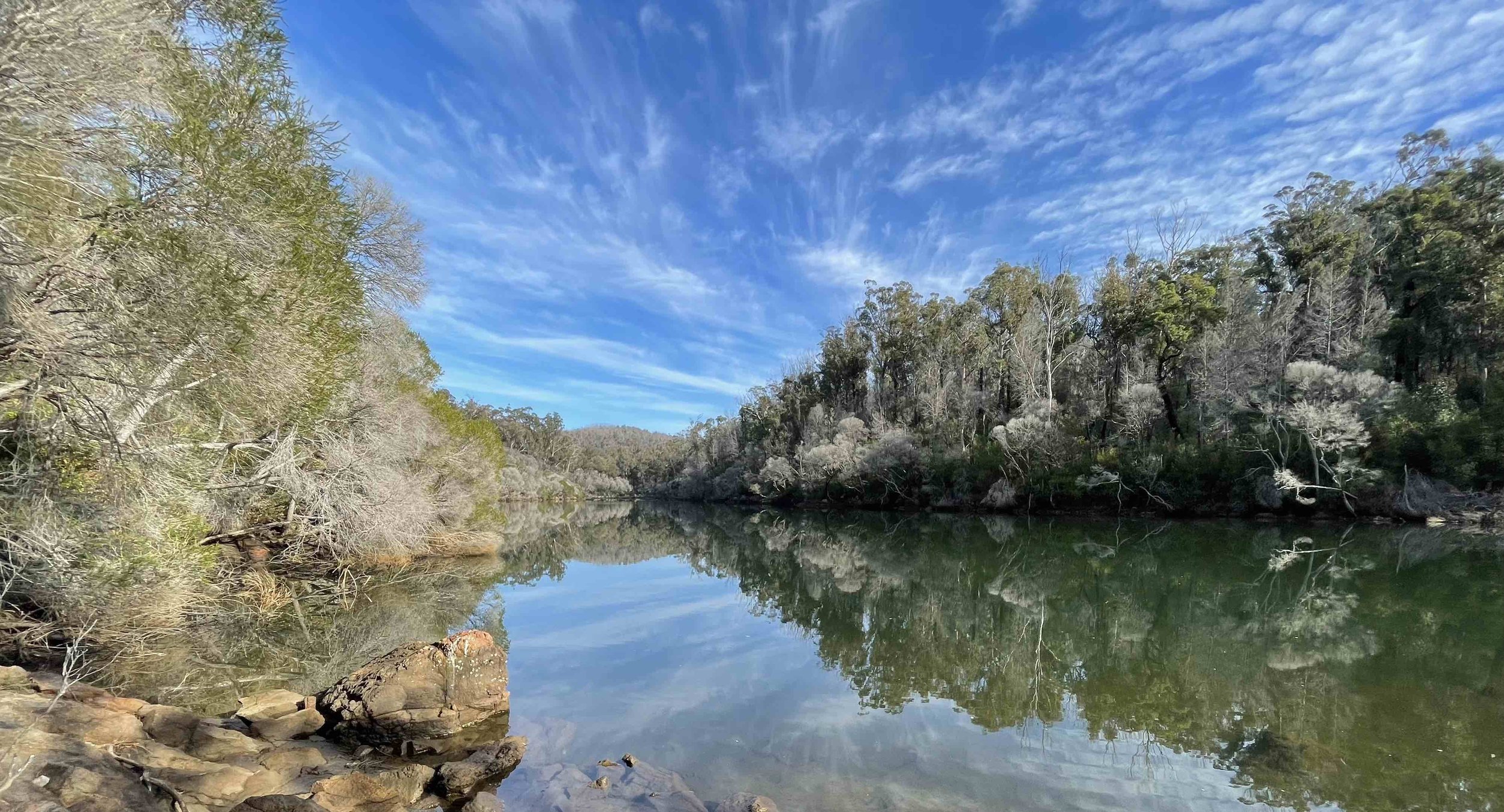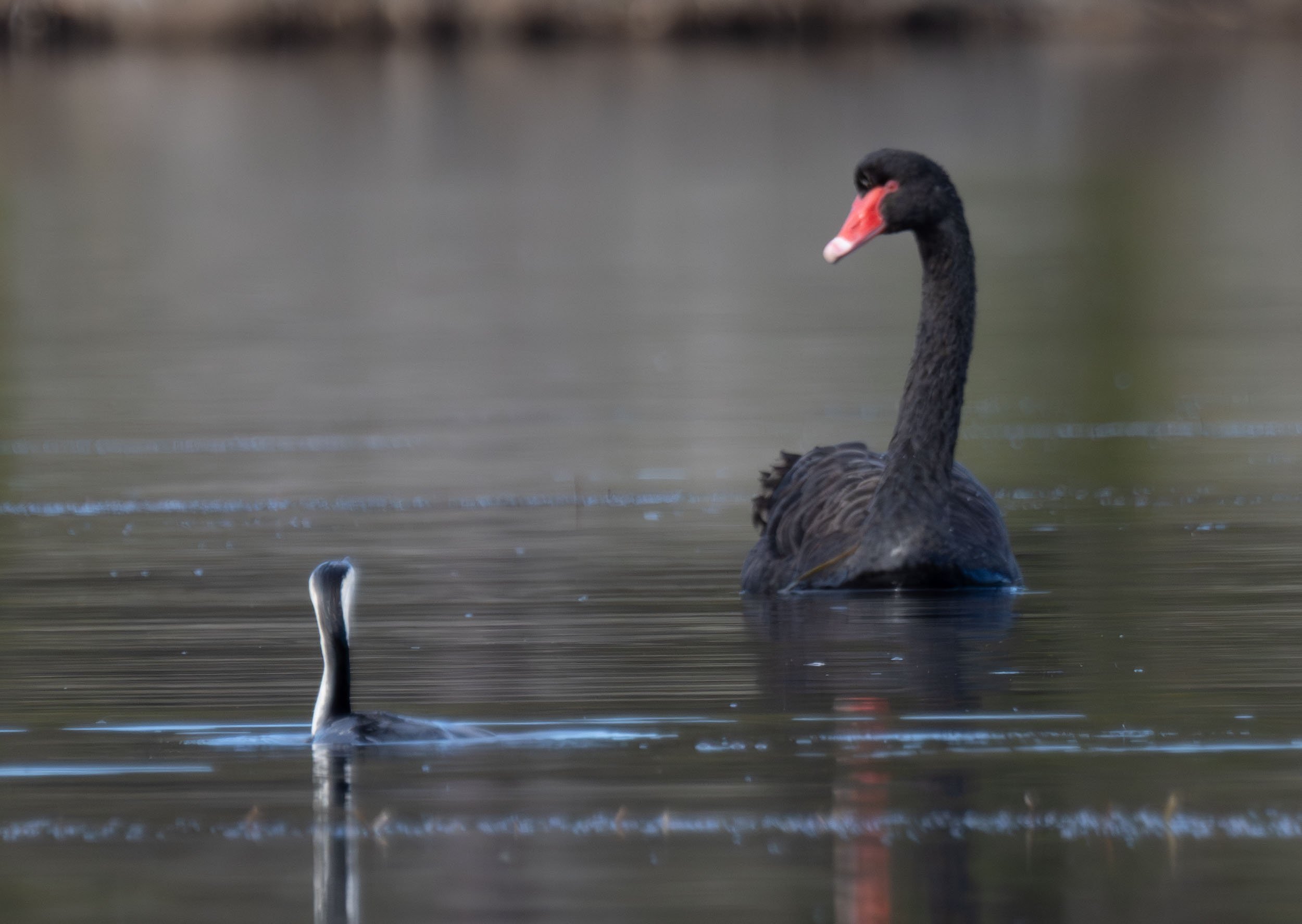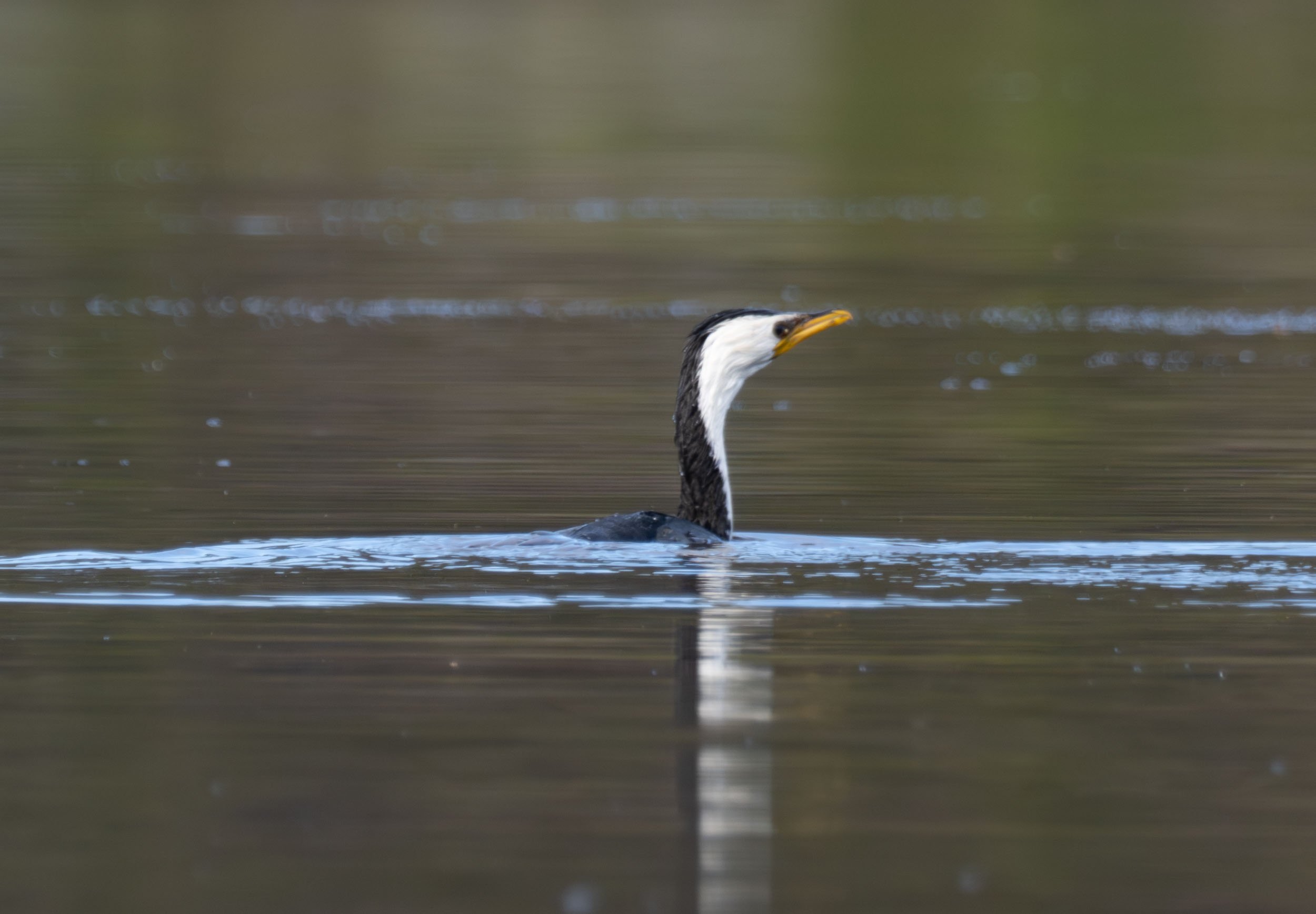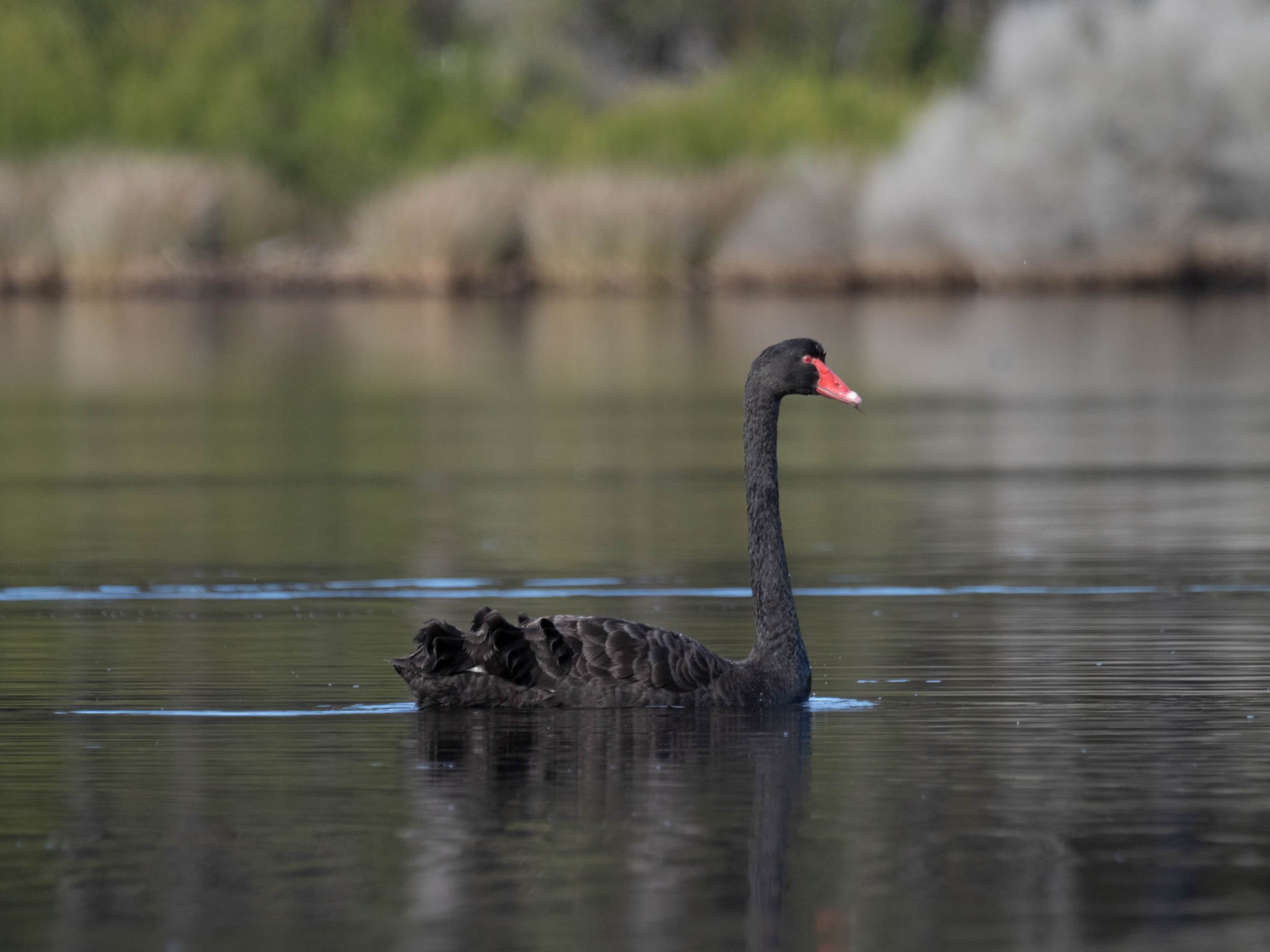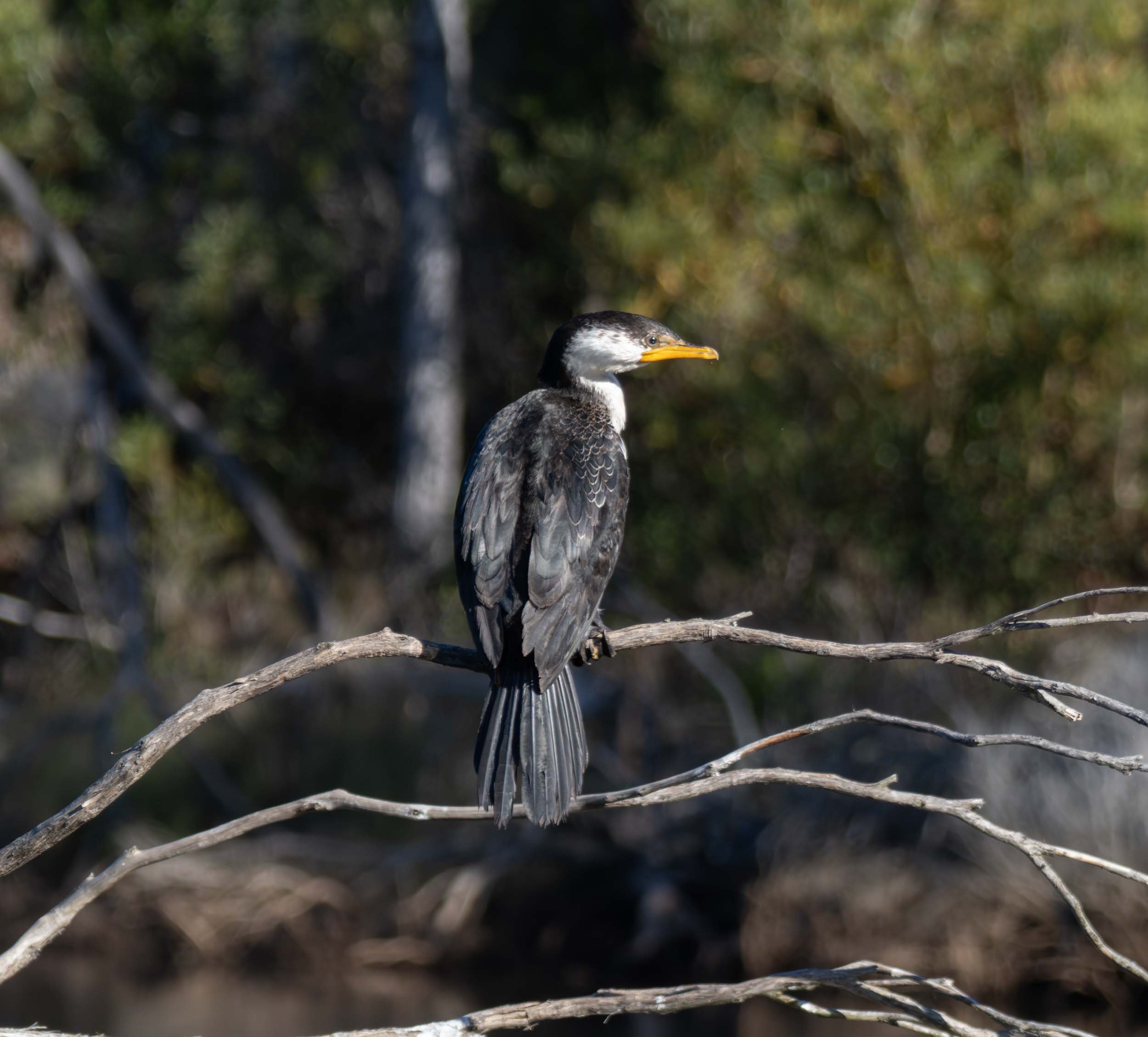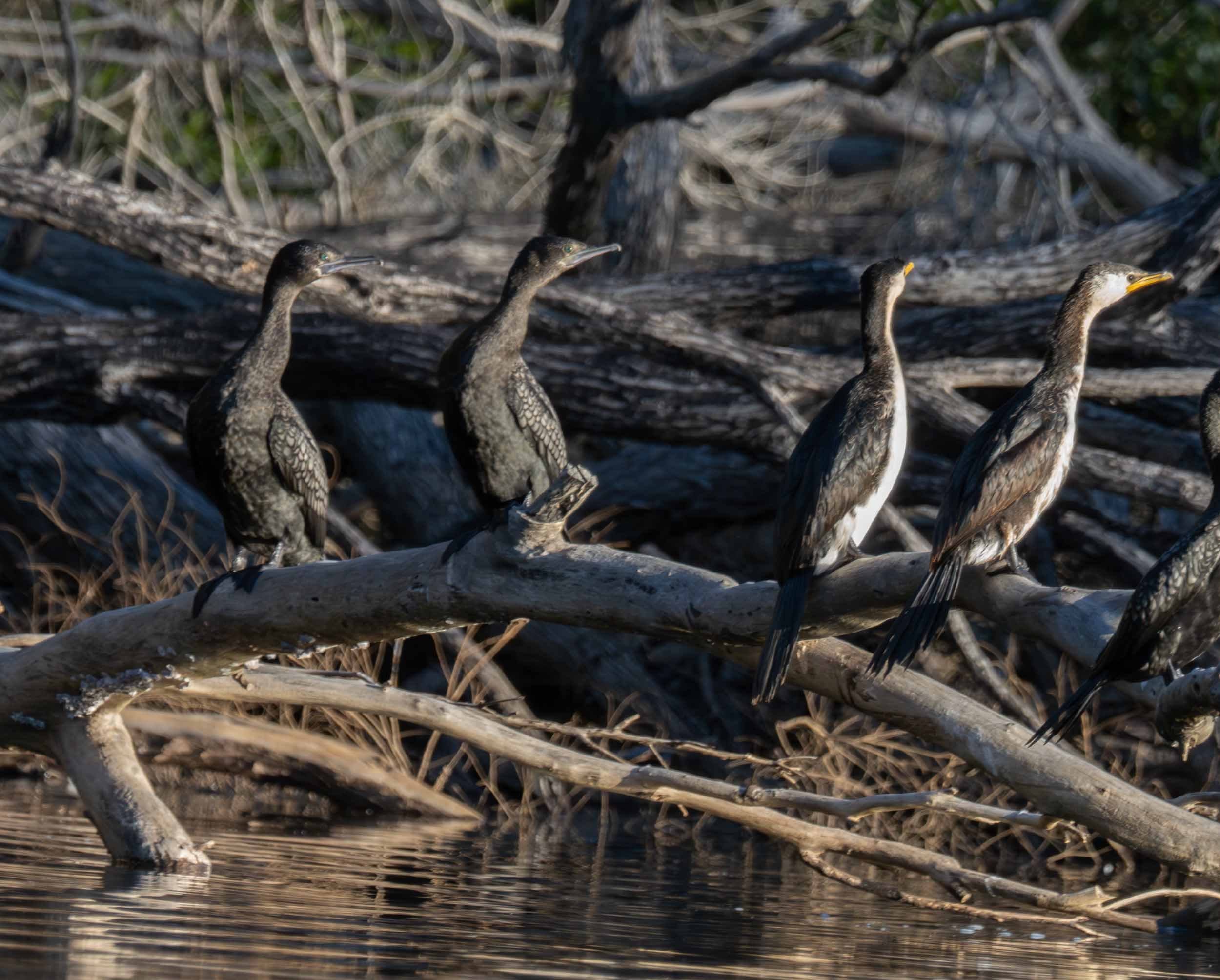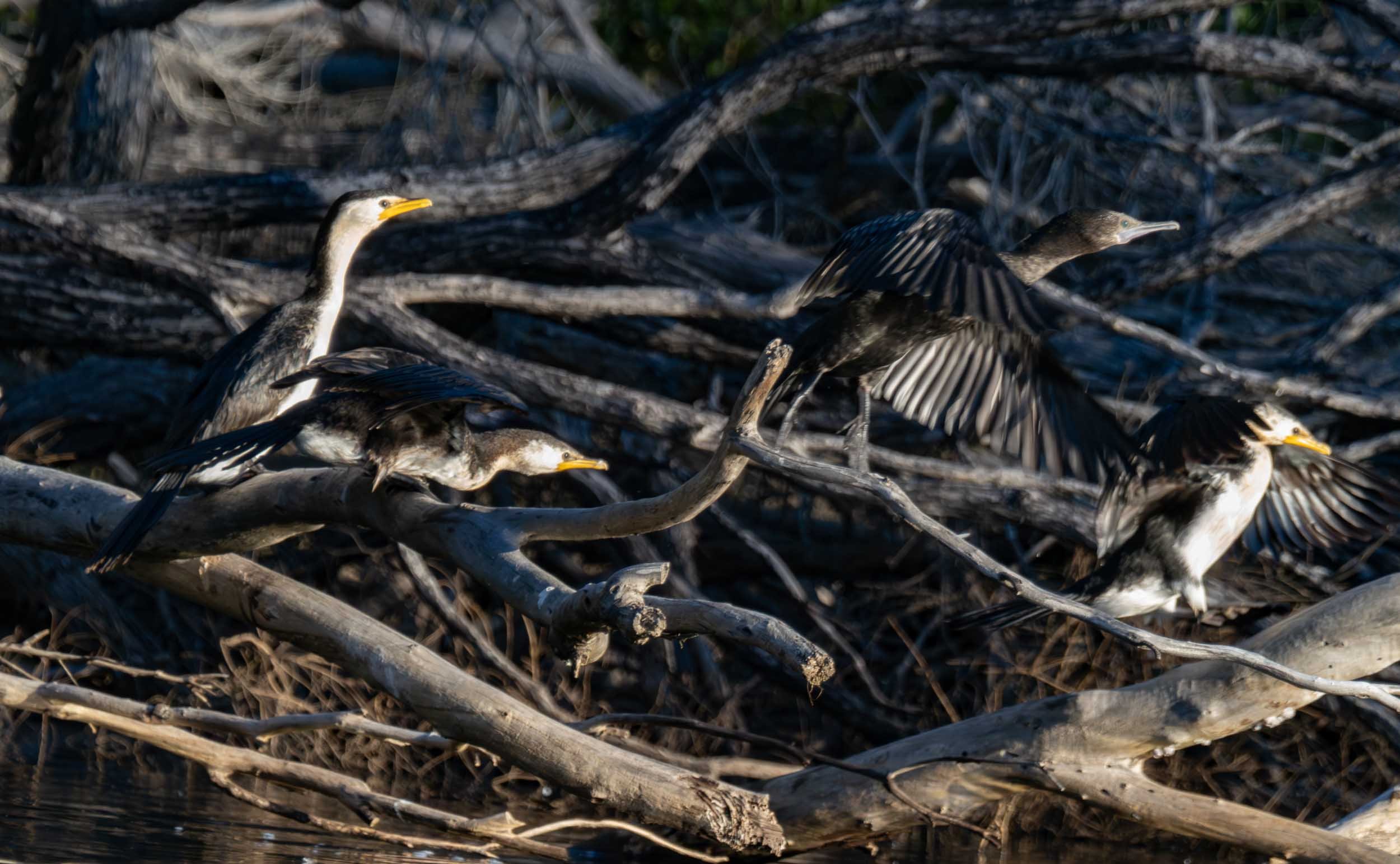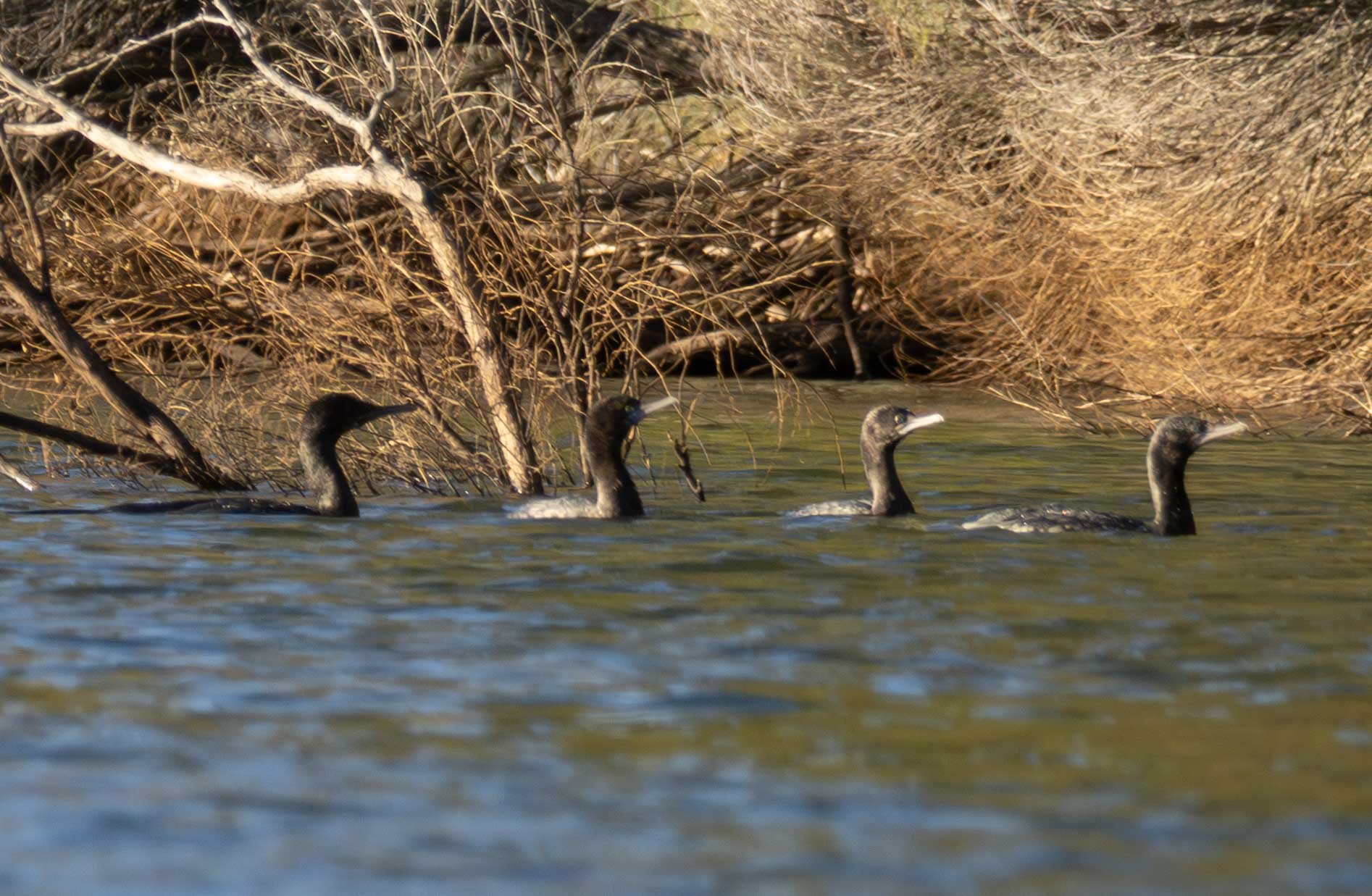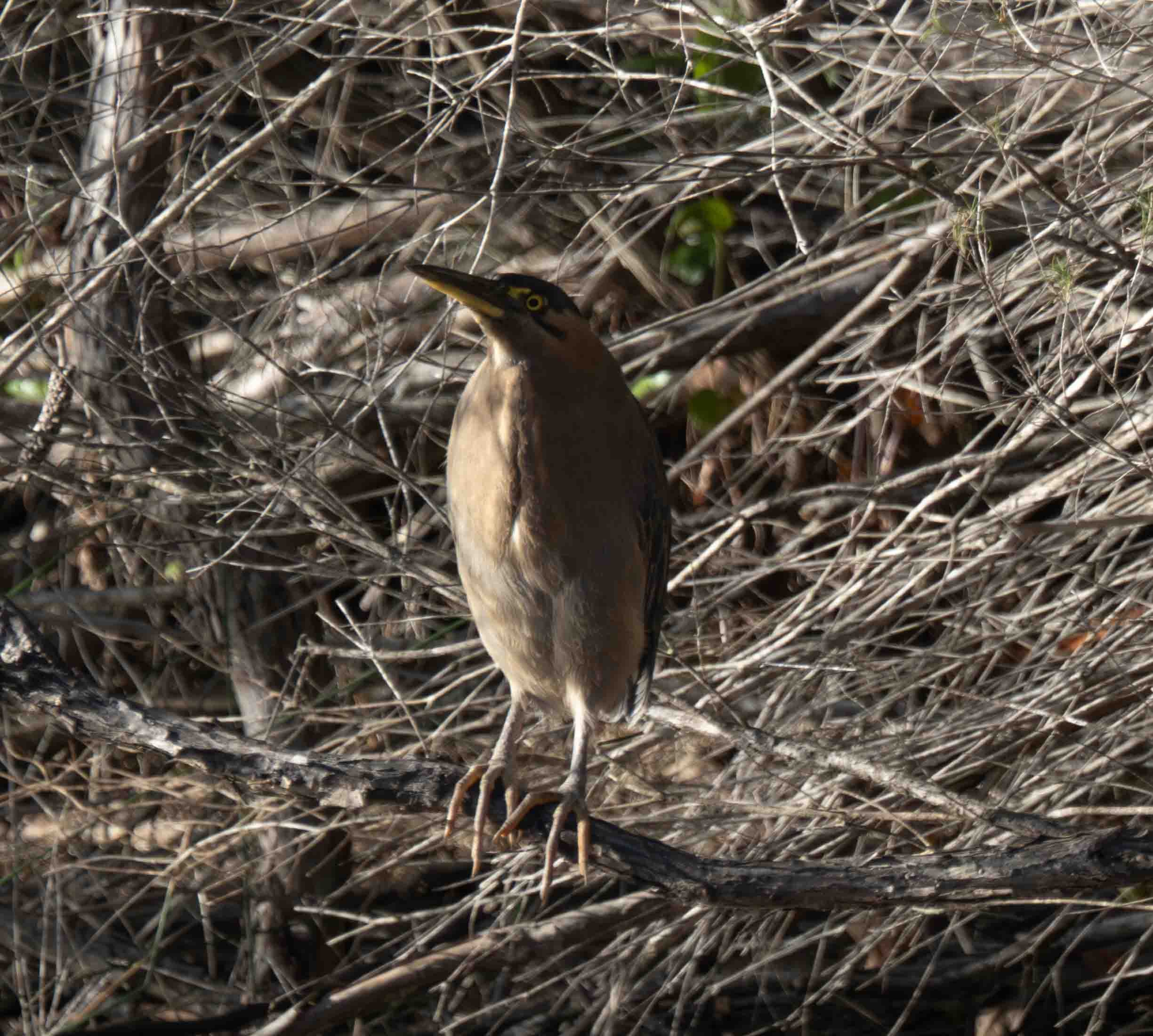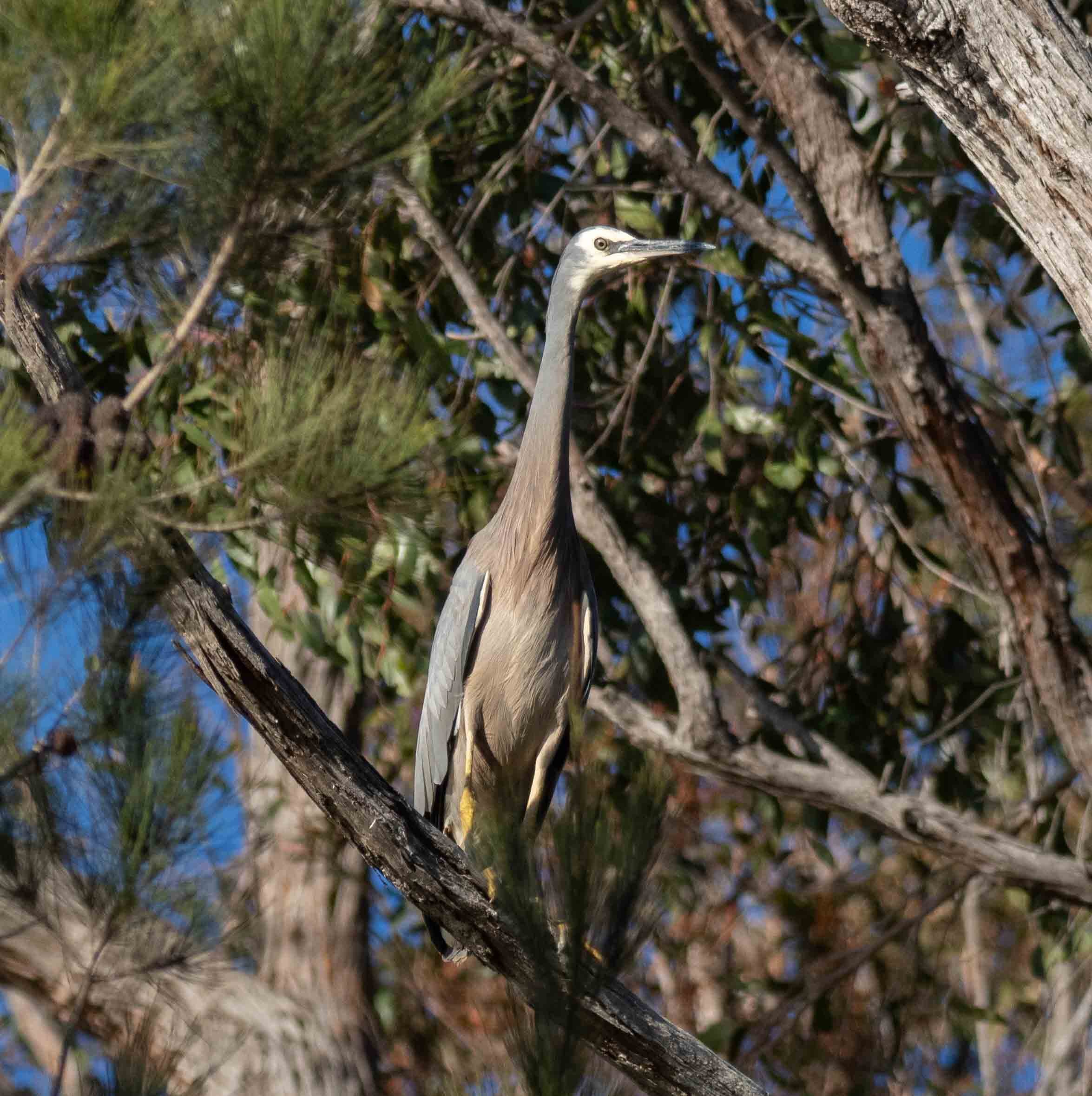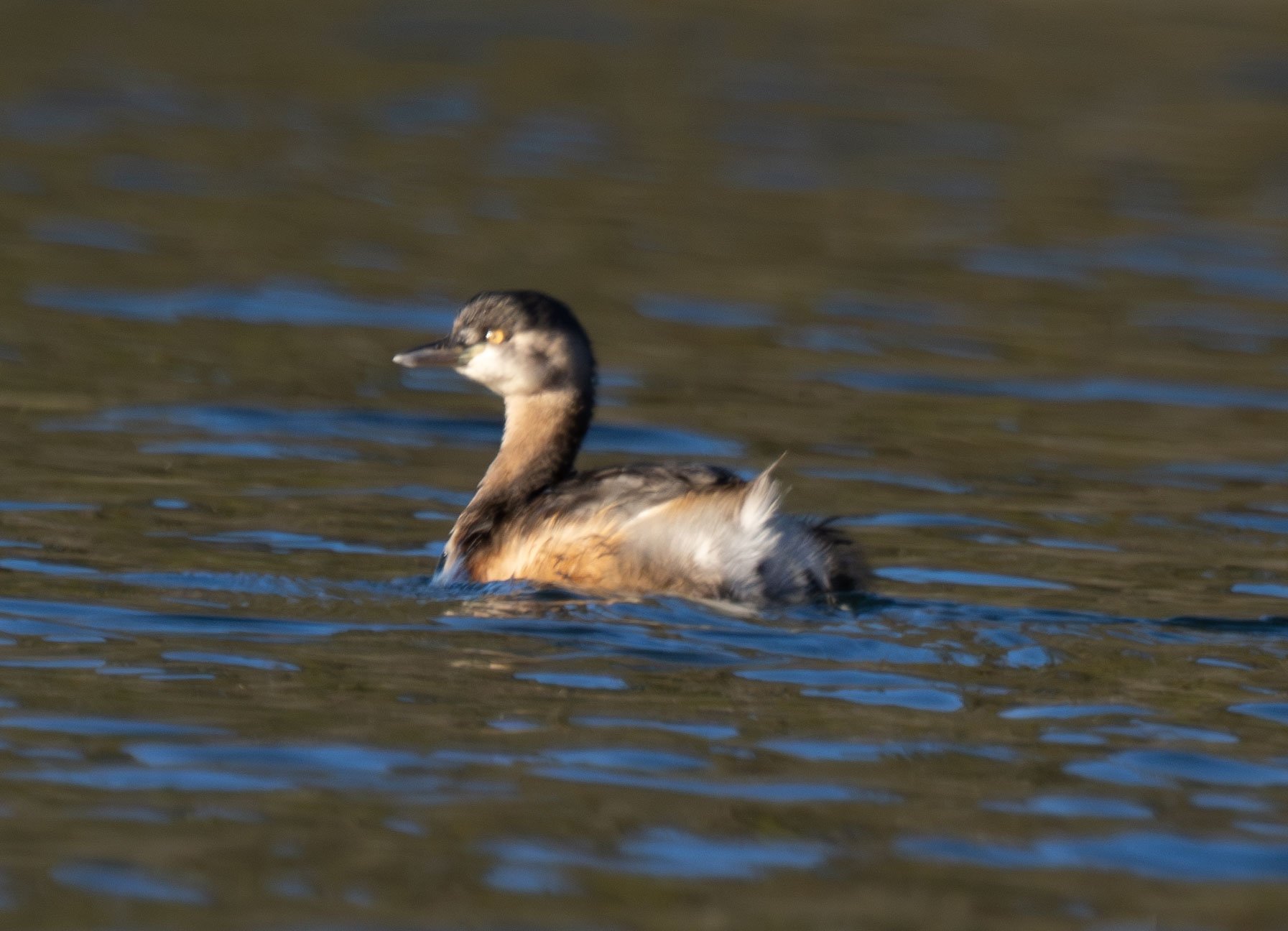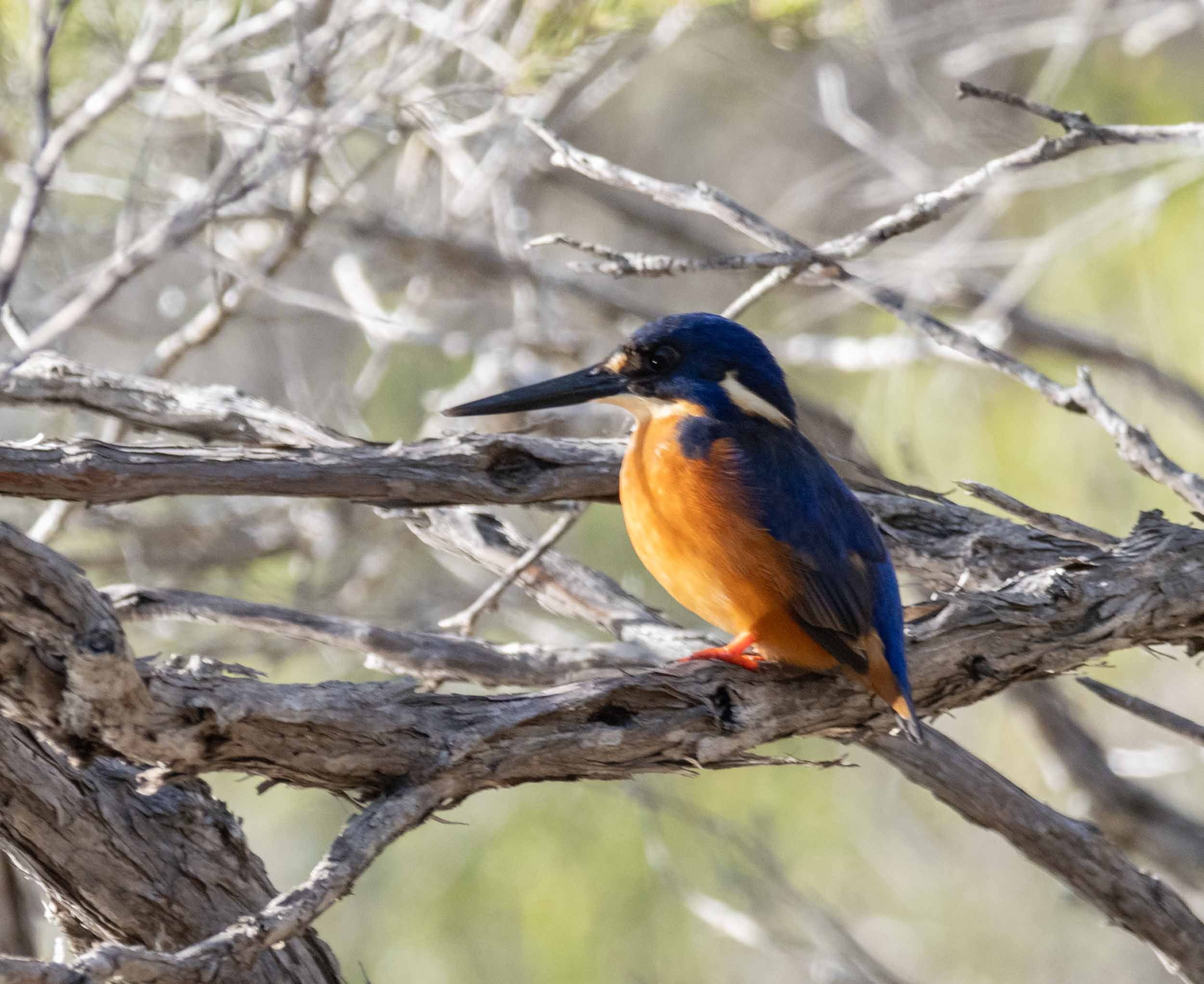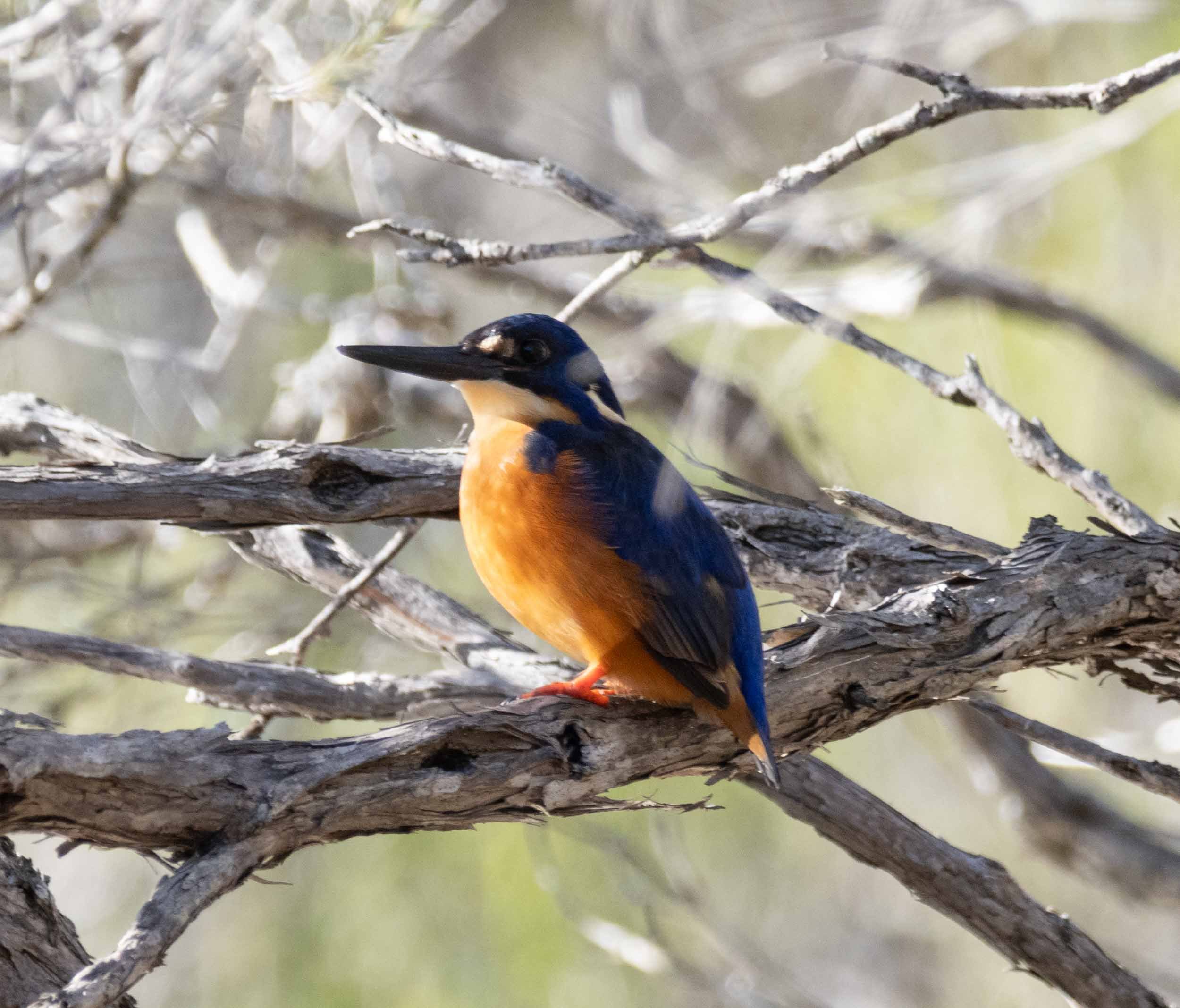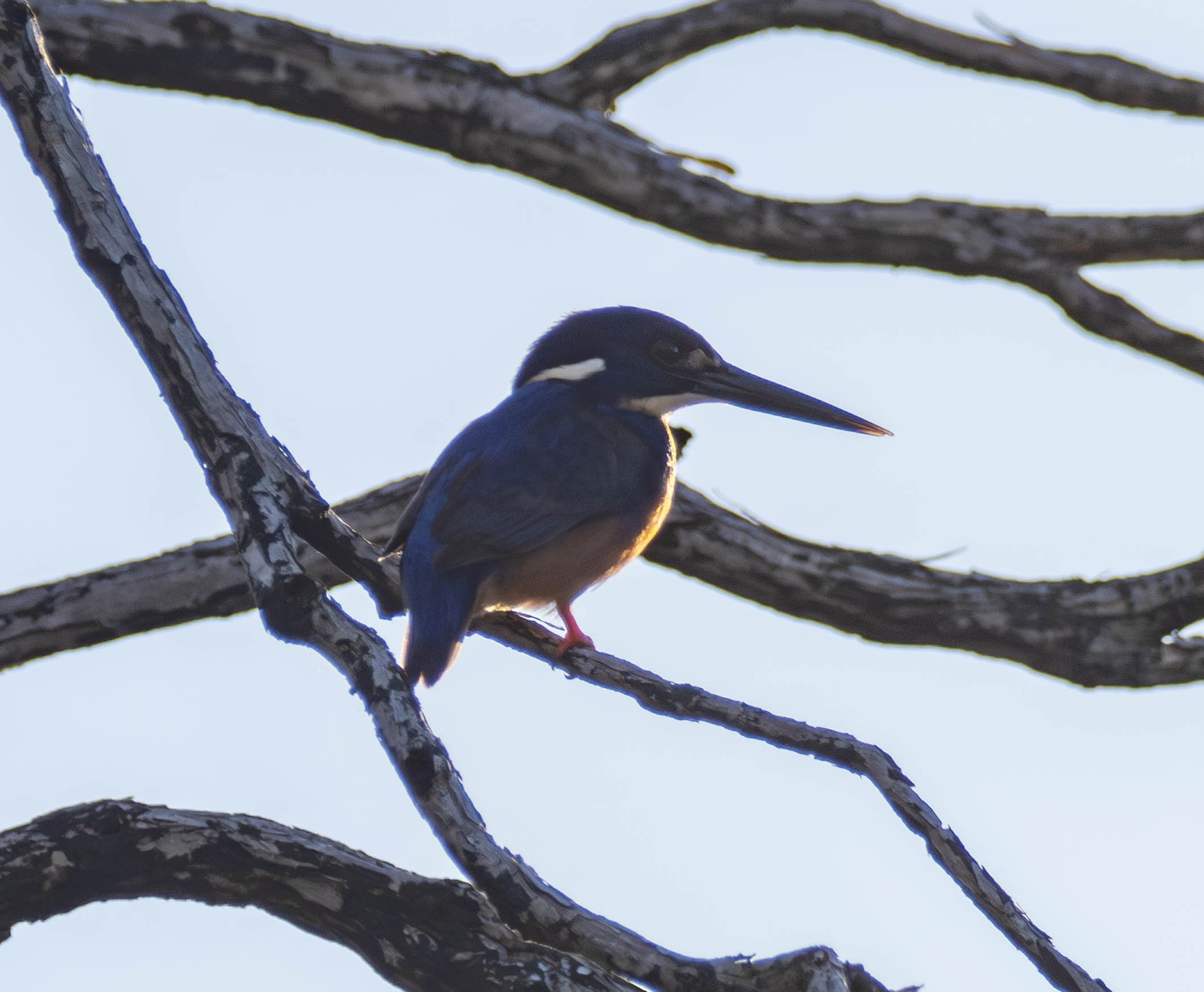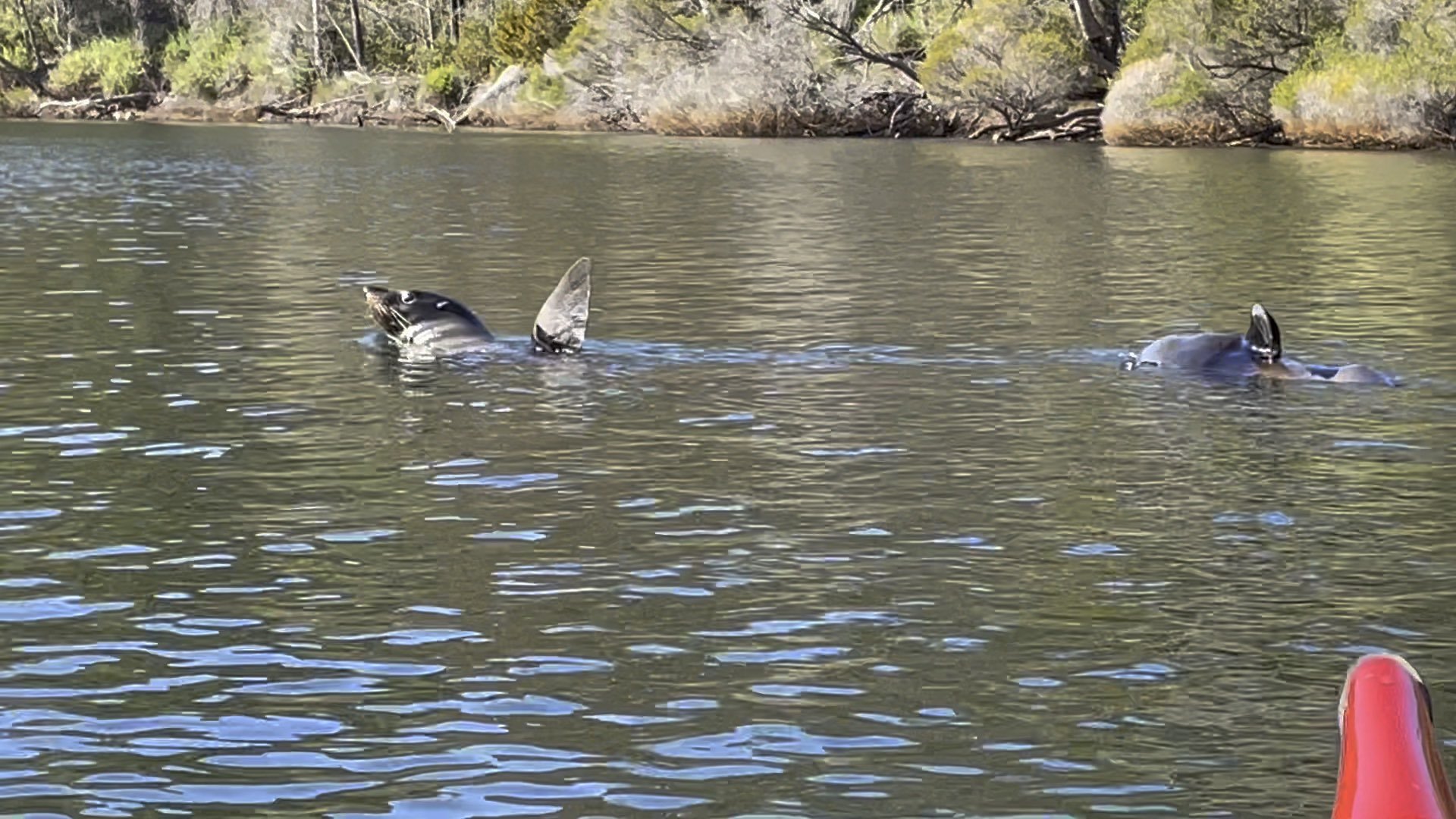Images of winter
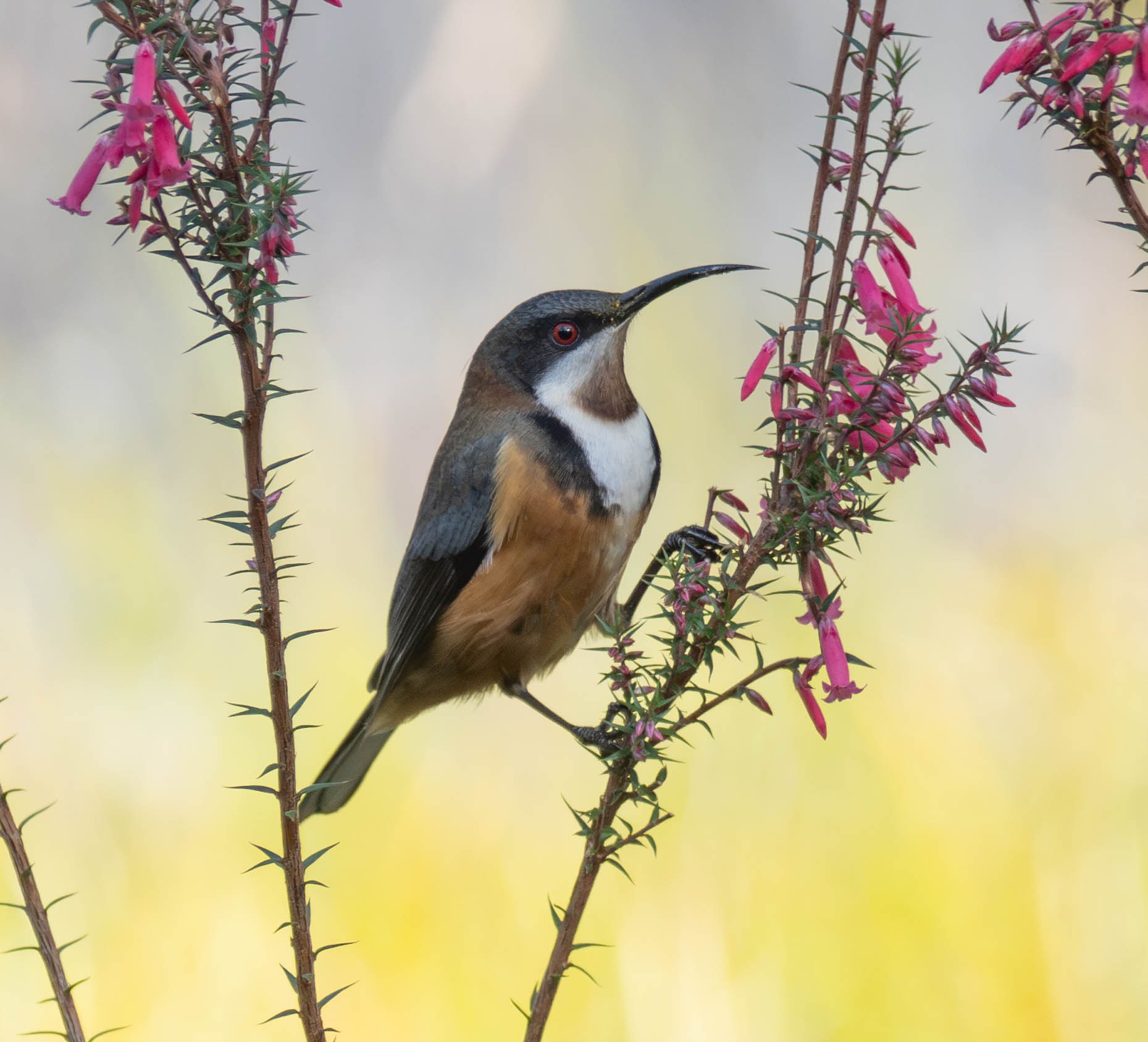
We’re now in the depths of winter.
It’s a quiet time of the year when it comes to insects and other arthropods. Most of these animals are in their larval stages, hidden away in a myriad of places.
But there is a lot of activity of mammals and birds in the forest in winter. As homeotherms they can get out and about even when it’s cold.
A female Swampy (Wallabia bicolor), grazing right in front of our deck early in the morning. It’s unusual to see this species so close to the house - they are very wary of people. It looks like she has a joey in her pouch.
The open area close to the house has a diverse range of forbs, making it a favourable feeding area for wallabies.
This is the same female (we think) 8 days later. Her joey, now out of the pouch, was feeding alongside but bounded off before I managed to get a photo. There has been a macropod population explosion since the January 2020 fire, fuelled by the strong growth of vegetation in the forest.
Another female wallaby with young, but a different species (Notamacropus rufogriseus). She is stripping flowers off the stems of Common Heath (Epacris impressa), one of the few plants flowering at this time of the year. They seem to be particularly tasty to wallabies. We’ve seen “swampies” devouring them as well.
This is likely the same female 3 weeks later. Her joey is now well and truly out of the pouch.
Here is the joey, standing nearby, sampling various forbs in the undergrowth.
This is the pair 8 days later. The mother has come to our frog pond to drink.
Wallabies aren’t the only creatures that enjoy Common Heather flowers. They make a nutritious supplement to the diet of the Pied Currawong.
Spinebills are also attracted to the Common Heath flowers. But unlike the currawongs and wallabies, they play a constructive role from the plant’s perspective.
They don’t eat the flowers. Instead, they insert the tip of their curved bill into the opening of the pink corolla, extend their long tongue and lap nectar from its base.
In the process, the tip of the beak gets dusted with white pollen, which they transfer to the next flower they visit. They play a key role in the pollination of this plant, which flowers when there are few insects to carry out the task.
The yellow pollen grains on the spinebill’s head at the base of its beak are a sign that it has been visiting the Hairpin Banksia (Banksia spinulosa), which also flowers in winter (see Crescent Honeyeater photos).
This close up photo of a cluster of Common Heath flowers shows the 5 pollen-bearing stamens near the opening of each corolla.
A Crescent Honeyeater pokes its beak into the showy inflorescence of a Hairpin Banksia (Banksia spinulosa) to extract nectar from the base of a flower. It too contributes to the pollination of this plant species as it gets dusted with pollen in the process.
“Honeyeater” is a bit of a misnomer for birds like this, as they actually feed on nectar, not honey. It takes a bee to turn nectar into honey.
Most forest birds feed on insects and spiders, rather than nectar. The Crested Shrike-tit is a good example, searching for arthropods under peeling eucalypt bark.
We spot this attractive little bird infrequently in the forest - in part because it spends much of its time feeding high in the canopy.
The Eastern Yellow Robin on the other hand is an almost ever-present sight right now. A family of these birds made a sudden appearance when I began chainsawing a fallen eucalypt tree.
They perched on nearby branches and tree trunks, searching for insects disturbed by my chainsawing. They suddenly flew to the ground to take ant larvae and termites spilling out of nests in the cut timber.
This is the typical stance of an Eastern Yellow Robin searching for food in the forest undergrowth.
Two of the family of four birds that profited from my activities.
We spotted our first Southern Brown Bandicoot (Isoodon obesulus) in the forest a year ago and since then we’ve made frequent sightings. We generally get just a glimpse as they scurry off into the undergrowth. But on occasion they can be seen feeding in the open, almost nonchalantly.
This little fellow was so intent on digging up a prey item that it barely noticed Kerri photographing the proceedings.
It arched its body to get deeper into the hole it had excavated.
Life on the river
I venture out of the forest occasionally to explore the adjacent river. It is currently in good health. I find a wide range of water birds in good numbers hunting for fish in its waters.
A kayak is my vehicle for exploring the river and its tributaries.
The vegetation on the banks of the river is recovering well following the January 2020 fire which swept down the river. Seedlings of Black Sheoak (Allocasuarina littoralis) and Port Jackson Pine (Callitris rhomboidea) are gradually replacing the trees killed in the fire.
There is a large billabong on the river a couple of kilometres upstream of the entrance to the lake. I’ve seen a large flock of up to 40 Hoary-headed Grebes feeding in its shallow waters on occasion, together with numerous Little Pied Cormorants, Grey Teals and a few Black Swans.
Large flocks of cormorants - in this case Little Pieds - perch on fallen trees overhanging the river, drying out their wings.
They took flight as I drew closer in my kayak
Characteristic behaviour, swimming in a line as they search for fish.
At several points along the river, I’ve seen a Striated Heron perched on a branch overhanging a shallow stretch of the river. This one flew up into a high branch as I drew closer.
White-faced Herons are usually seen wading in the shallows near the banks of the river. This one flew into an overhead tree as I approached. This species ventures into the forest on occasion, searching for frogs and other prey.
A different species of grebe - the Australasian Grebe - can also be seen at various points along the river. Unlike the Hoary-headed Grebe, they are usually found in small flocks of 3-4 birds.
I frequently see the stunning Azure Kingfisher on my forays along the river. They perch on branches overhanging the river before diving into the water to catch a fish or other prey. An adult pair is said to keep a permanent territory of 200-500 metres of waterfront.
A surprise vertebrate on the river!
I encountered this pair of seals while paddling down the river in late July. They were lolling in the shallow waters, holding a flipper erect to soak up the warmth of the sun on this unseasonably mild day.
